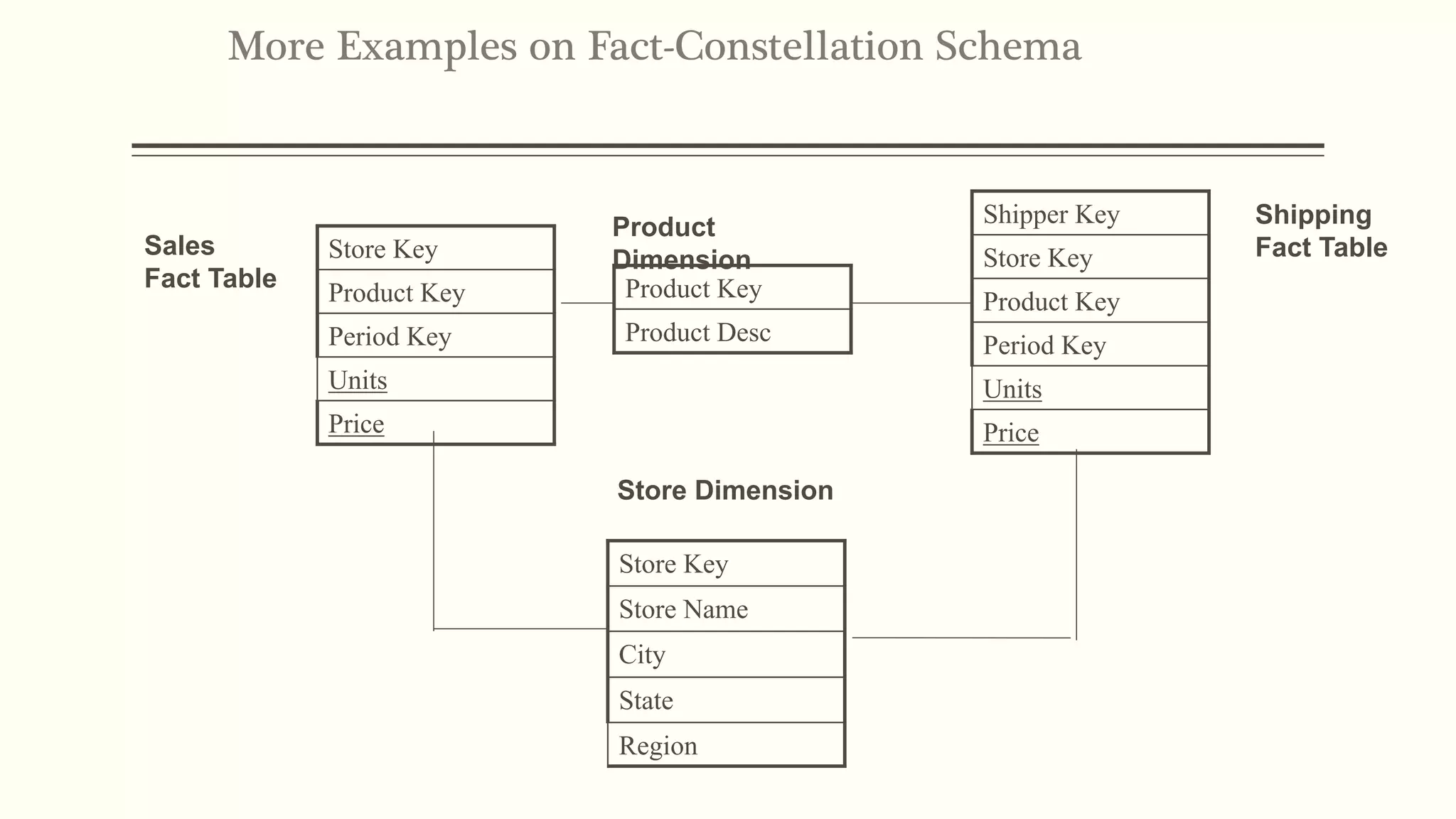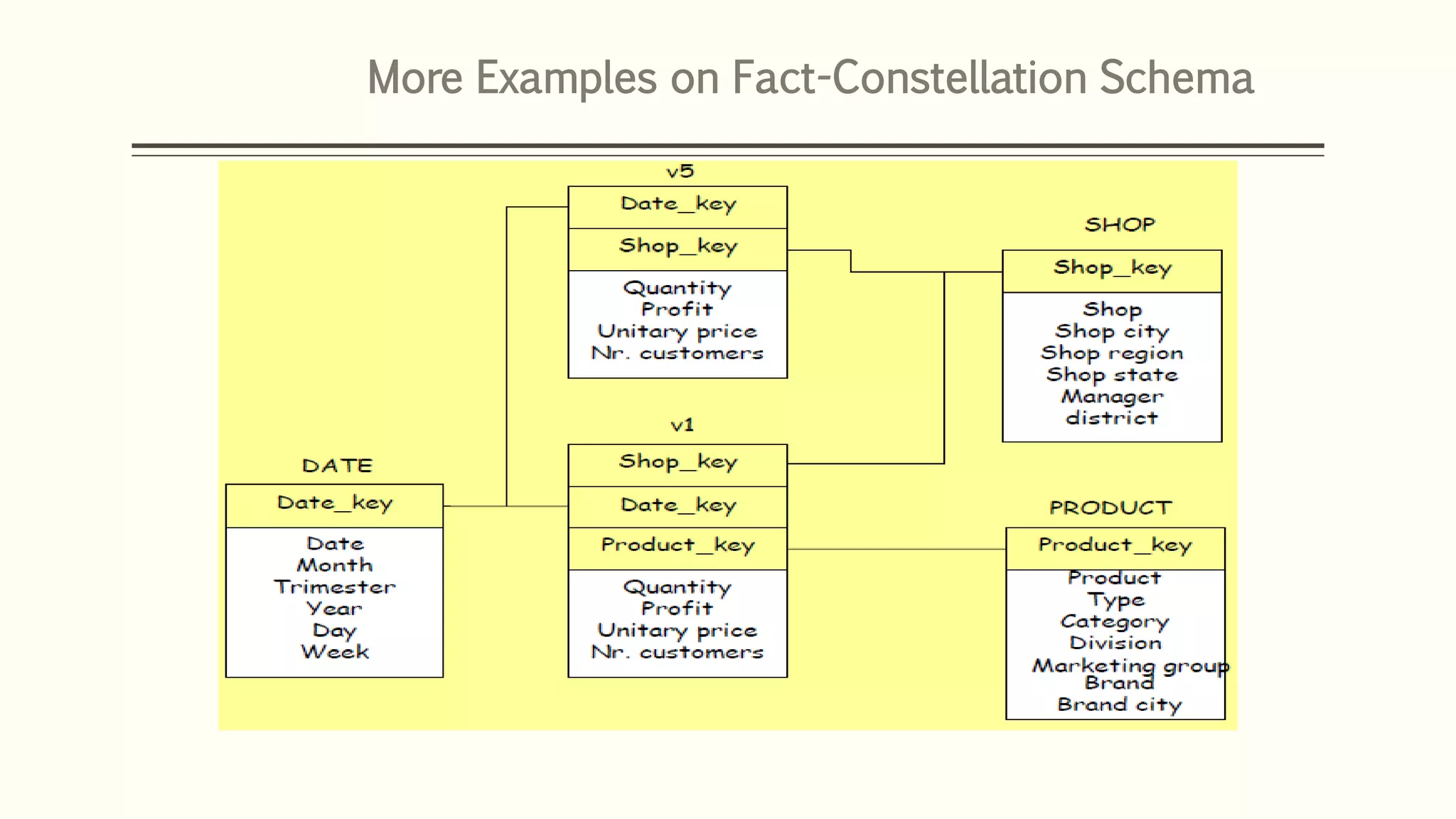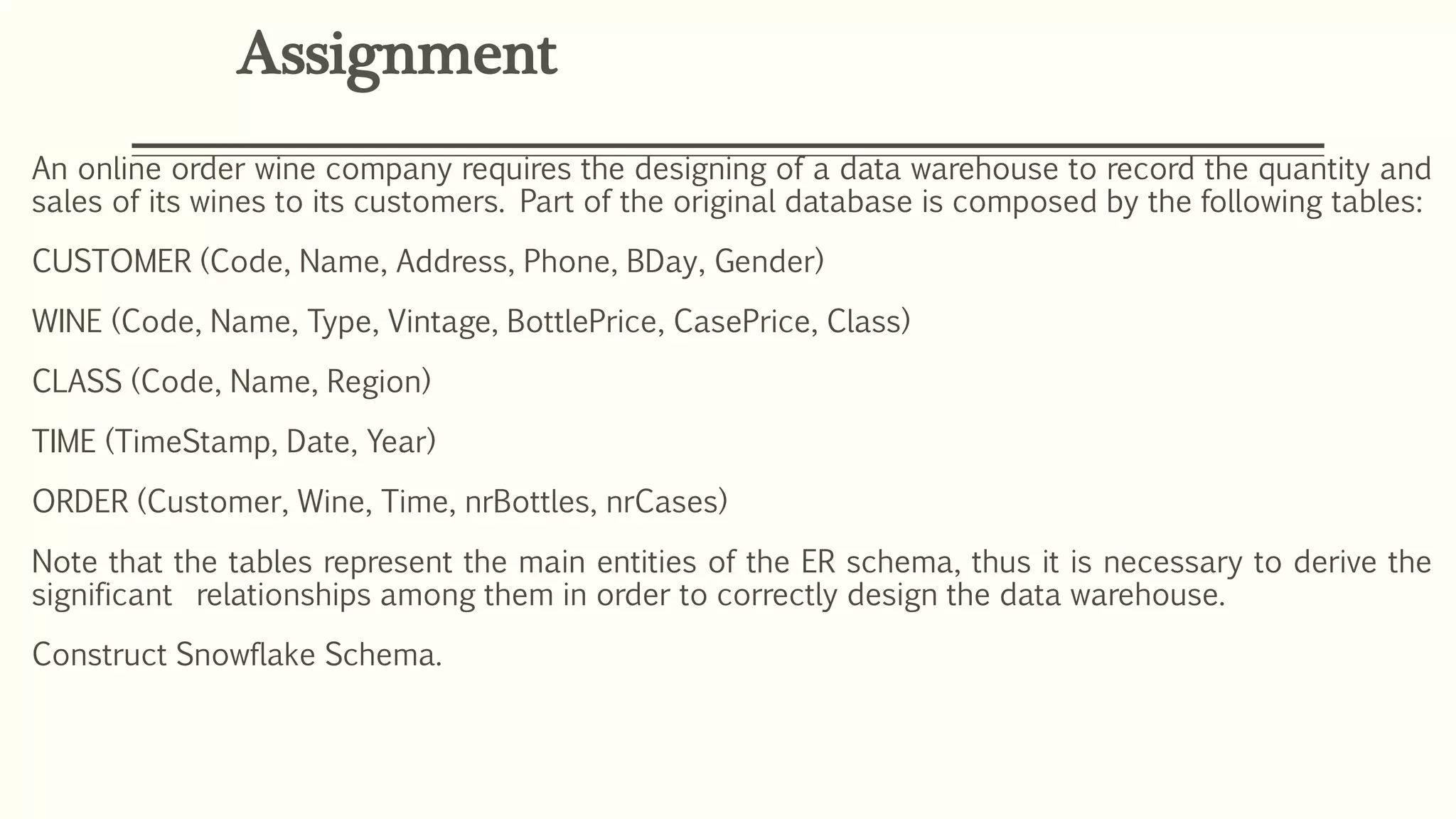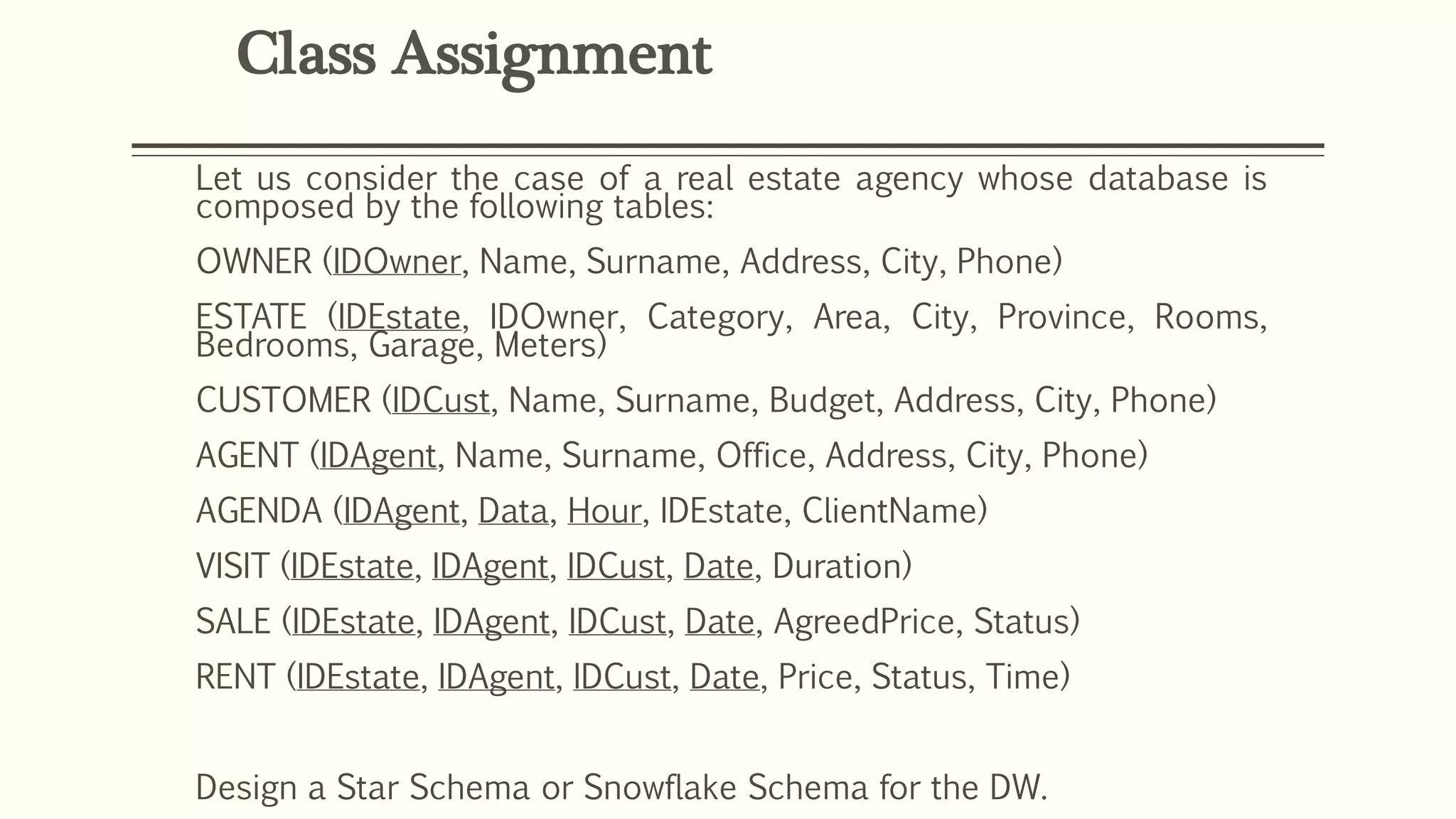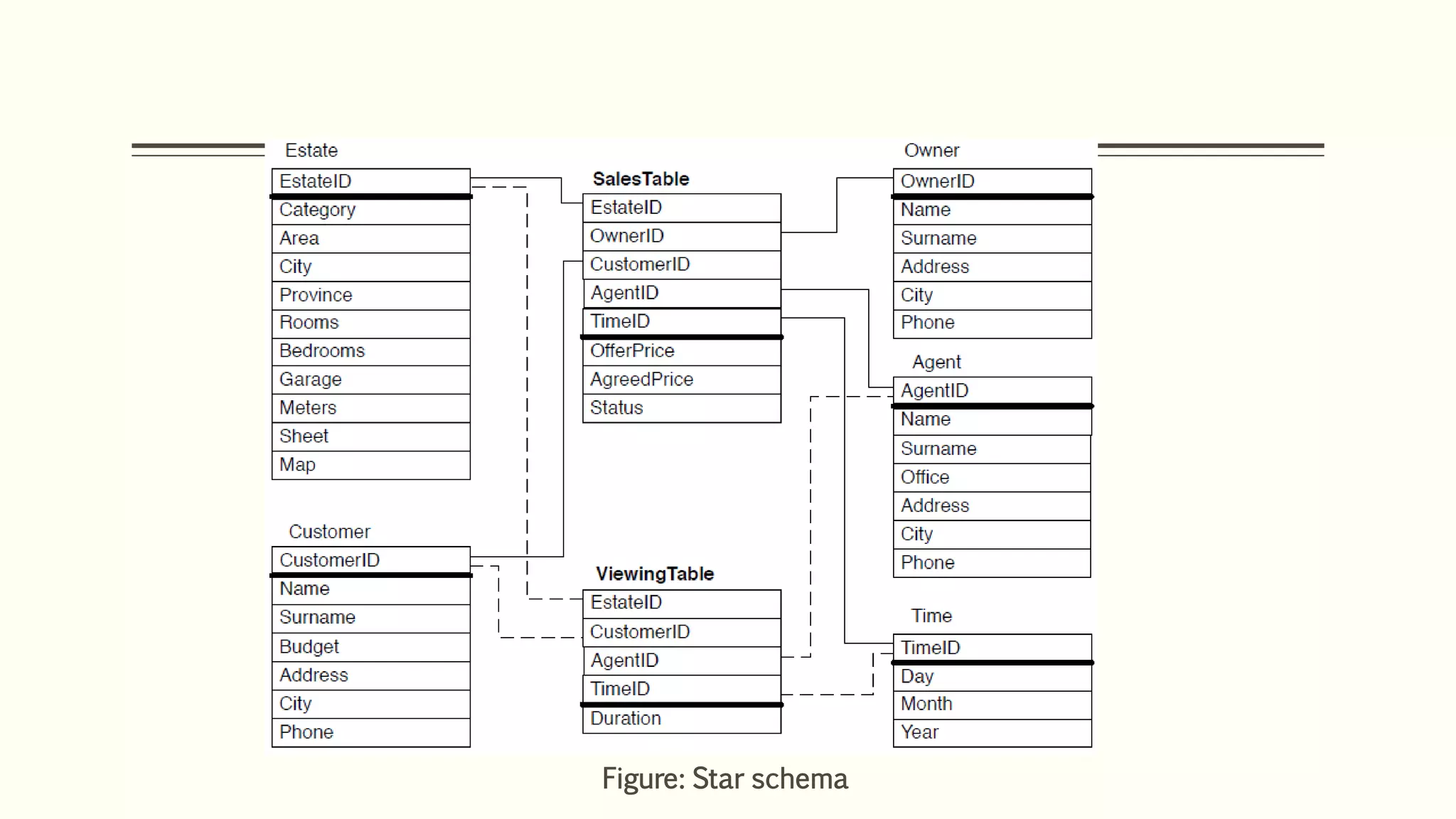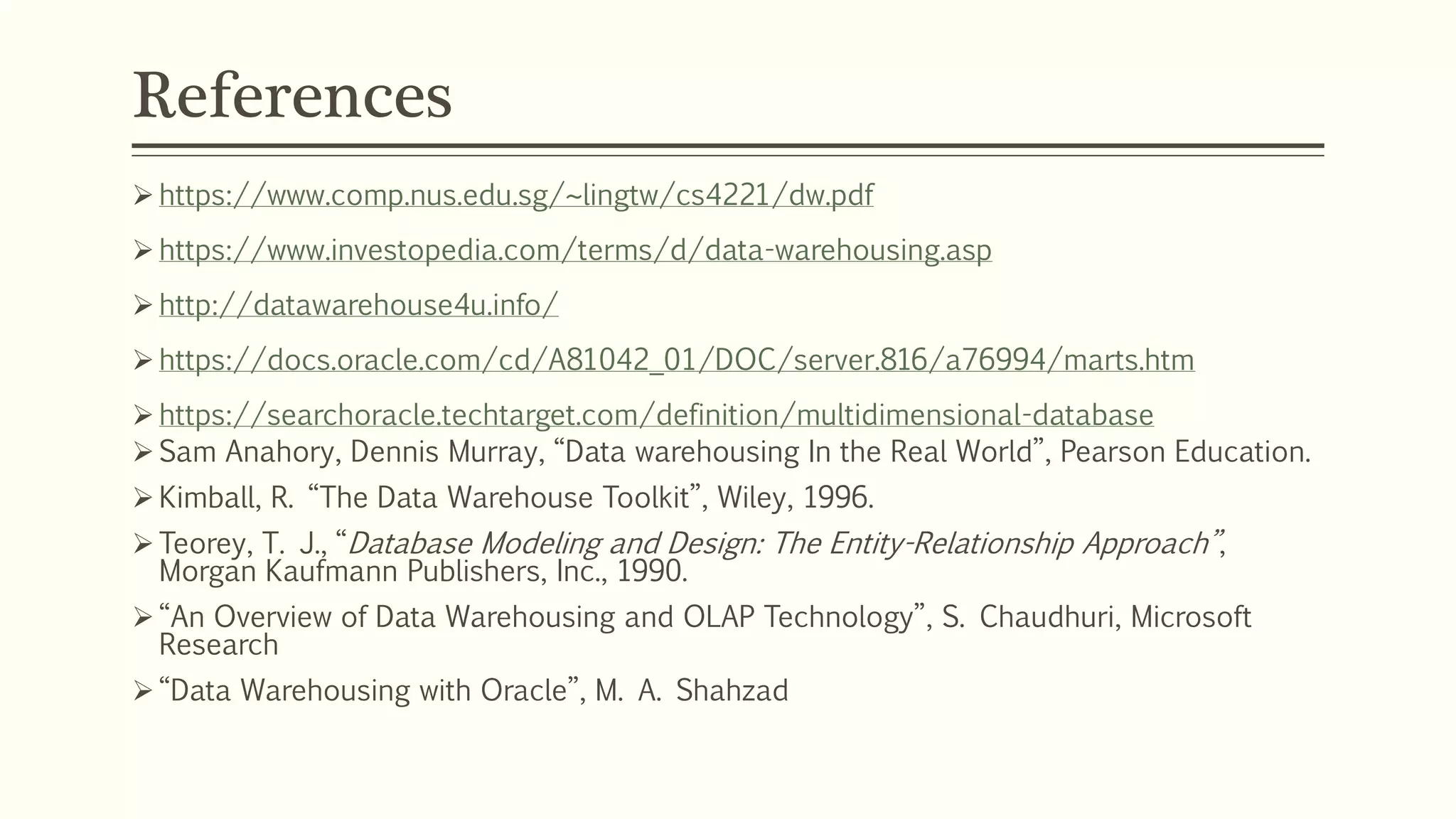This document discusses various concepts in data warehouse logical design including data marts, types of data marts (dependent, independent, hybrid), star schemas, snowflake schemas, and fact constellation schemas. It defines each concept and provides examples to illustrate them. Dependent data marts are created from an existing data warehouse, independent data marts are stand-alone without a data warehouse, and hybrid data marts combine data from a warehouse and other sources. Star schemas have one table for each dimension that joins to a central fact table, while snowflake schemas have normalized dimension tables. Fact constellation schemas have multiple fact tables that share dimension tables.
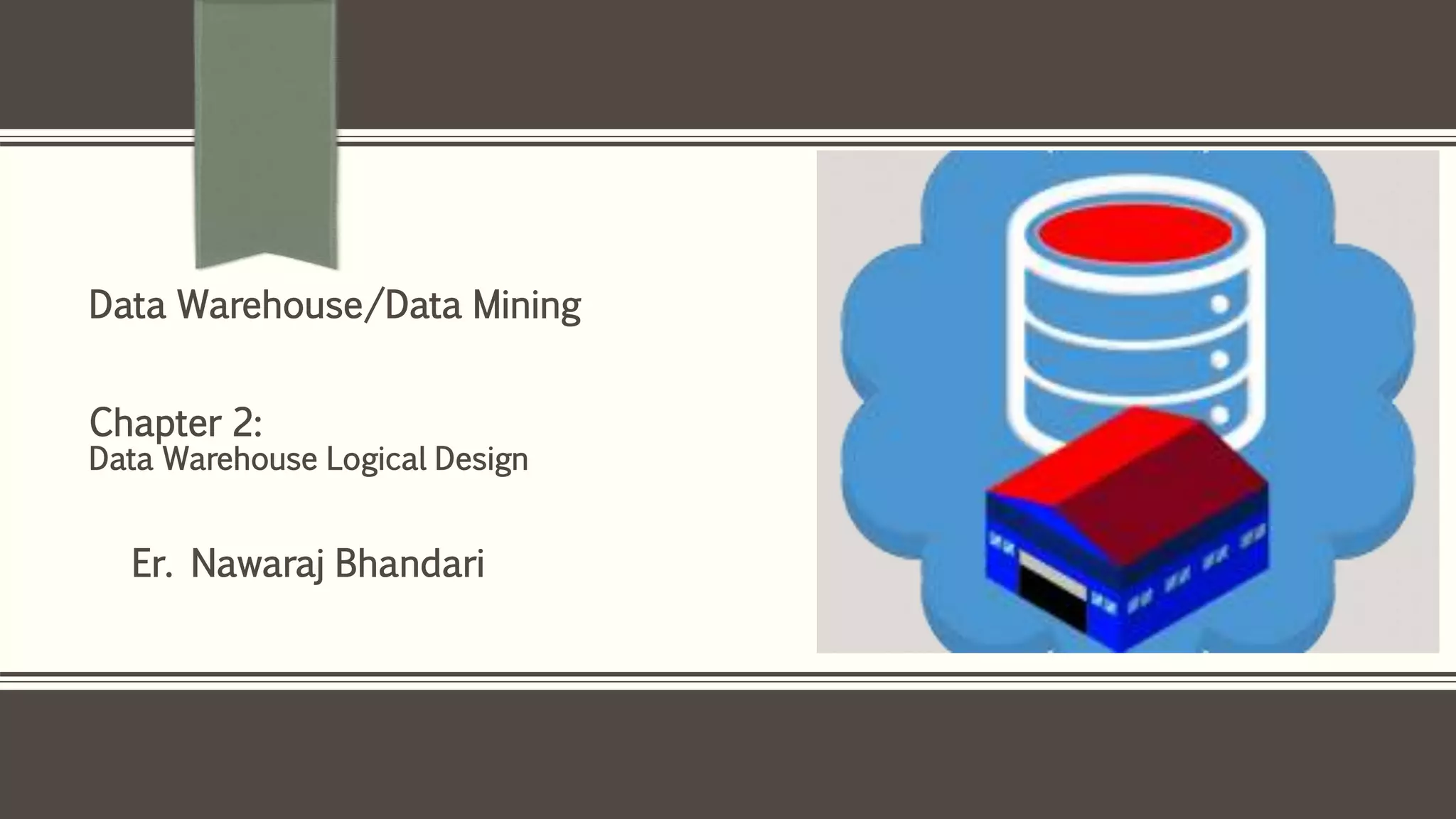
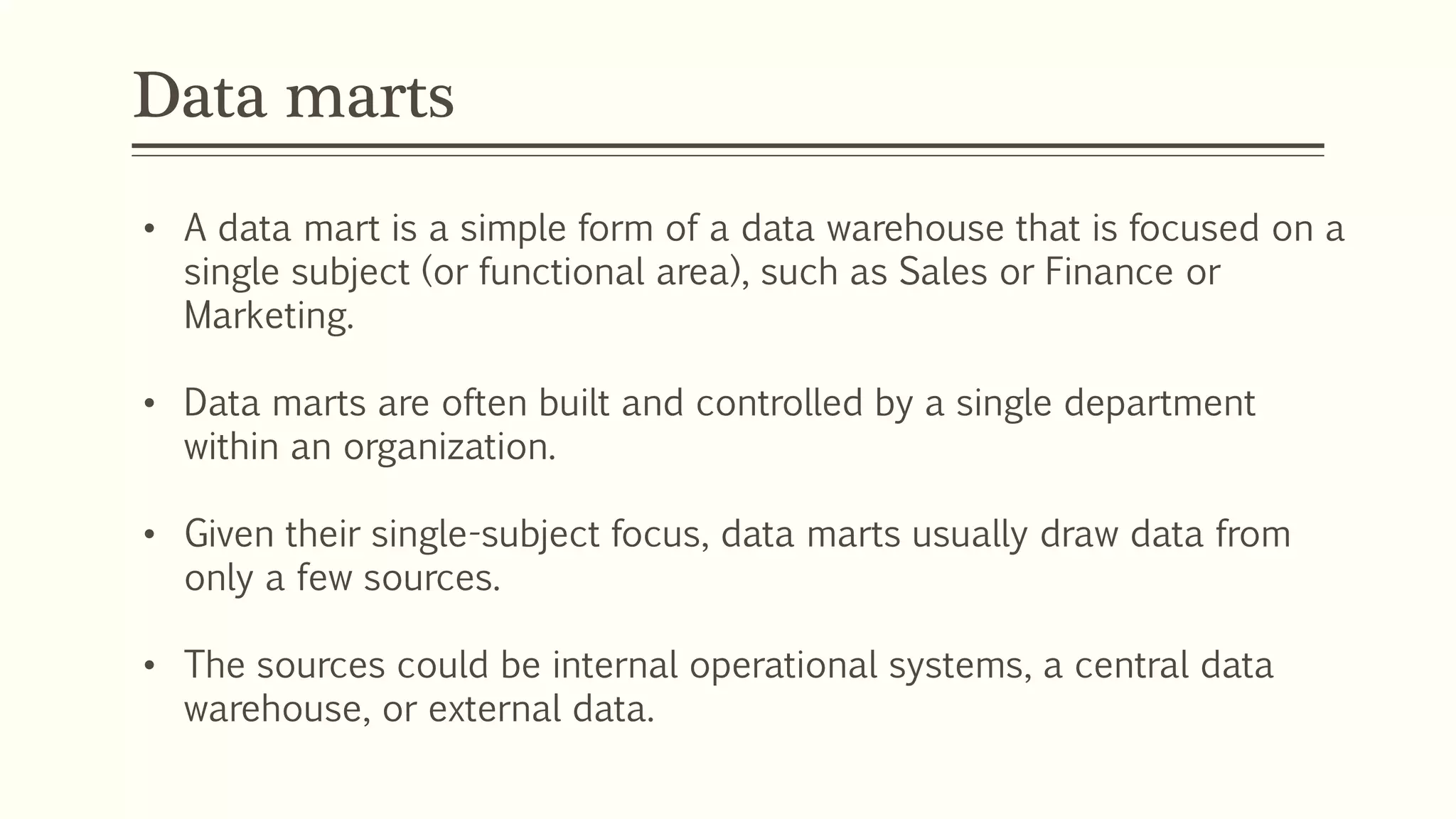
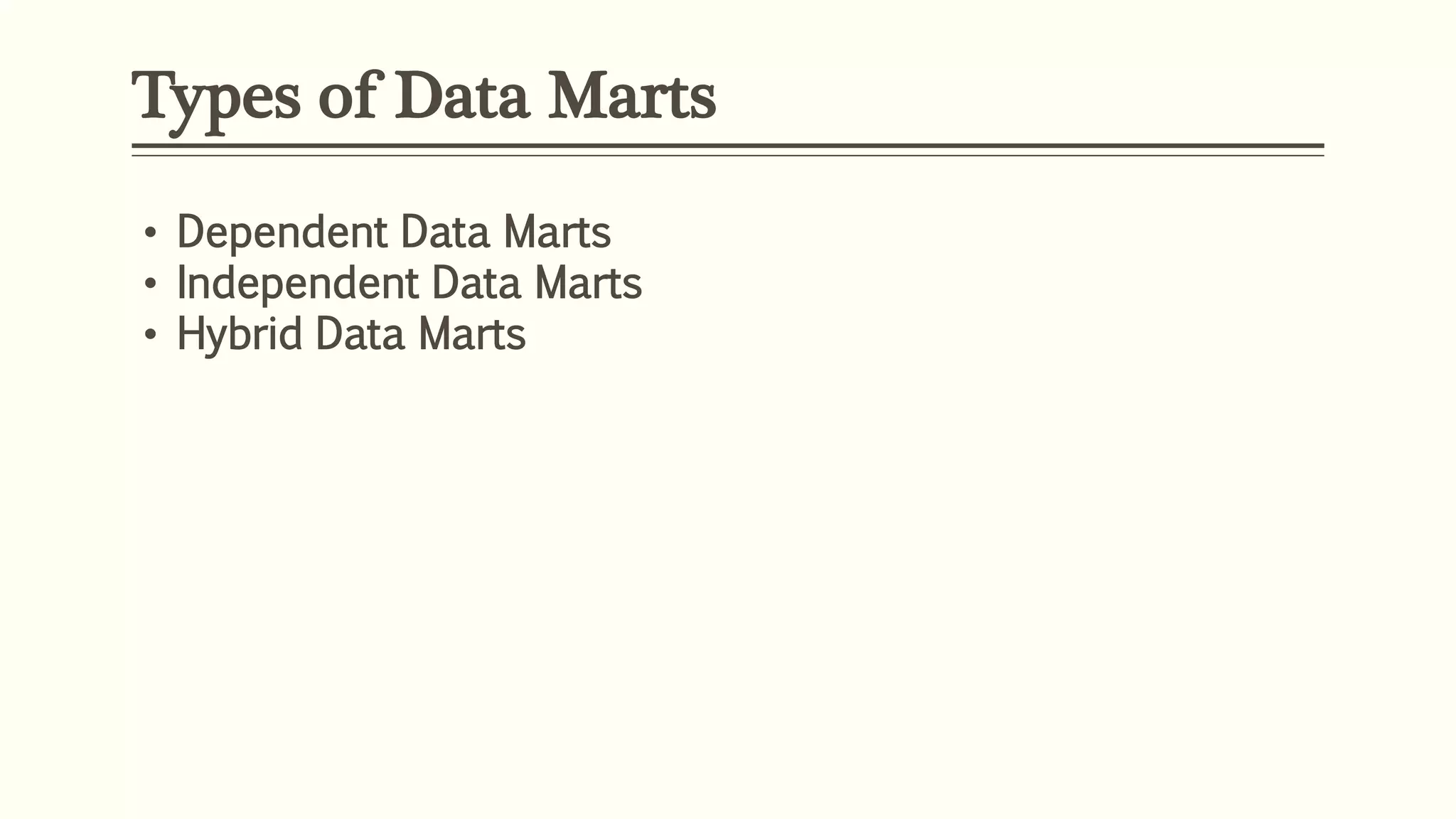
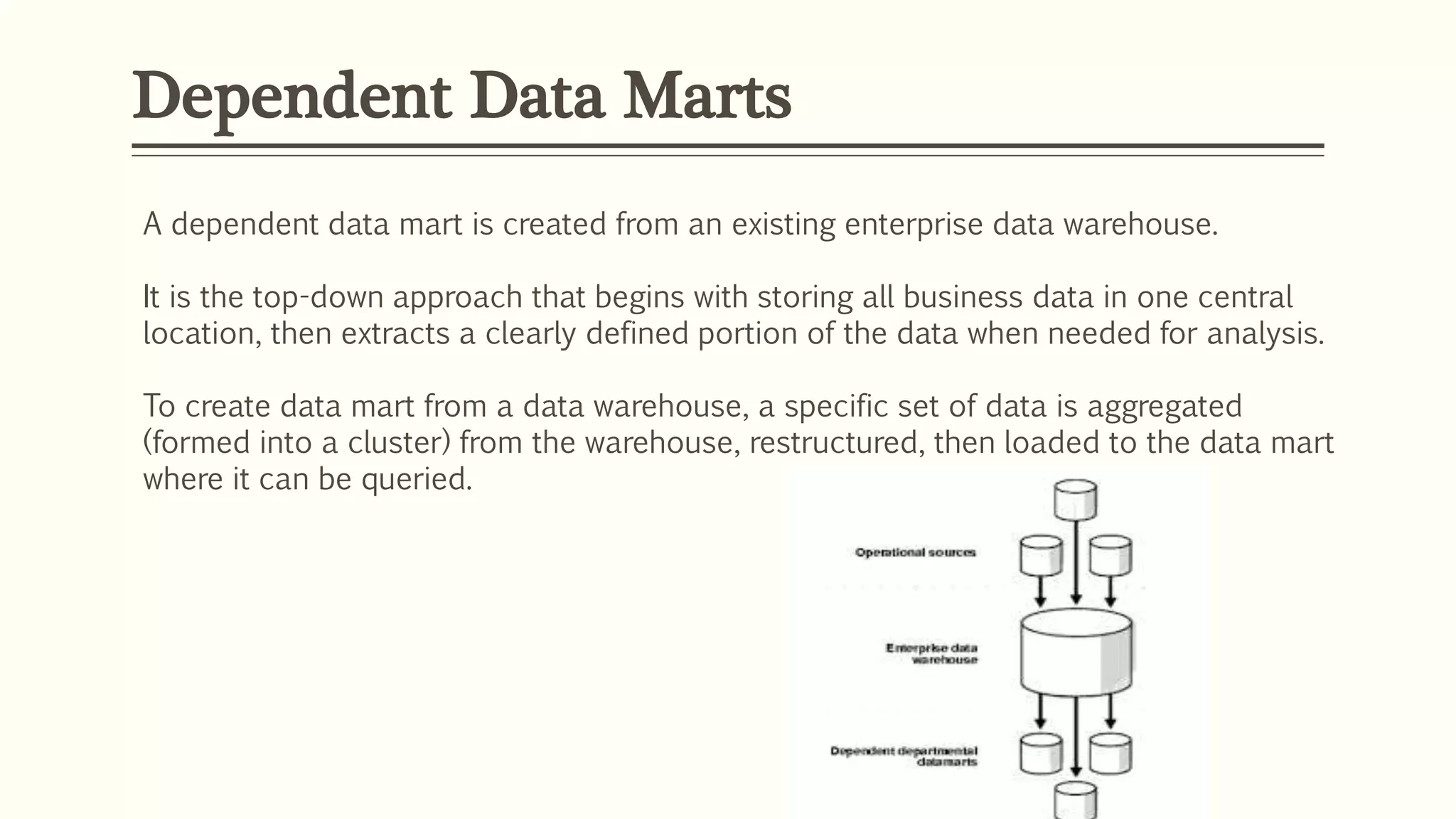
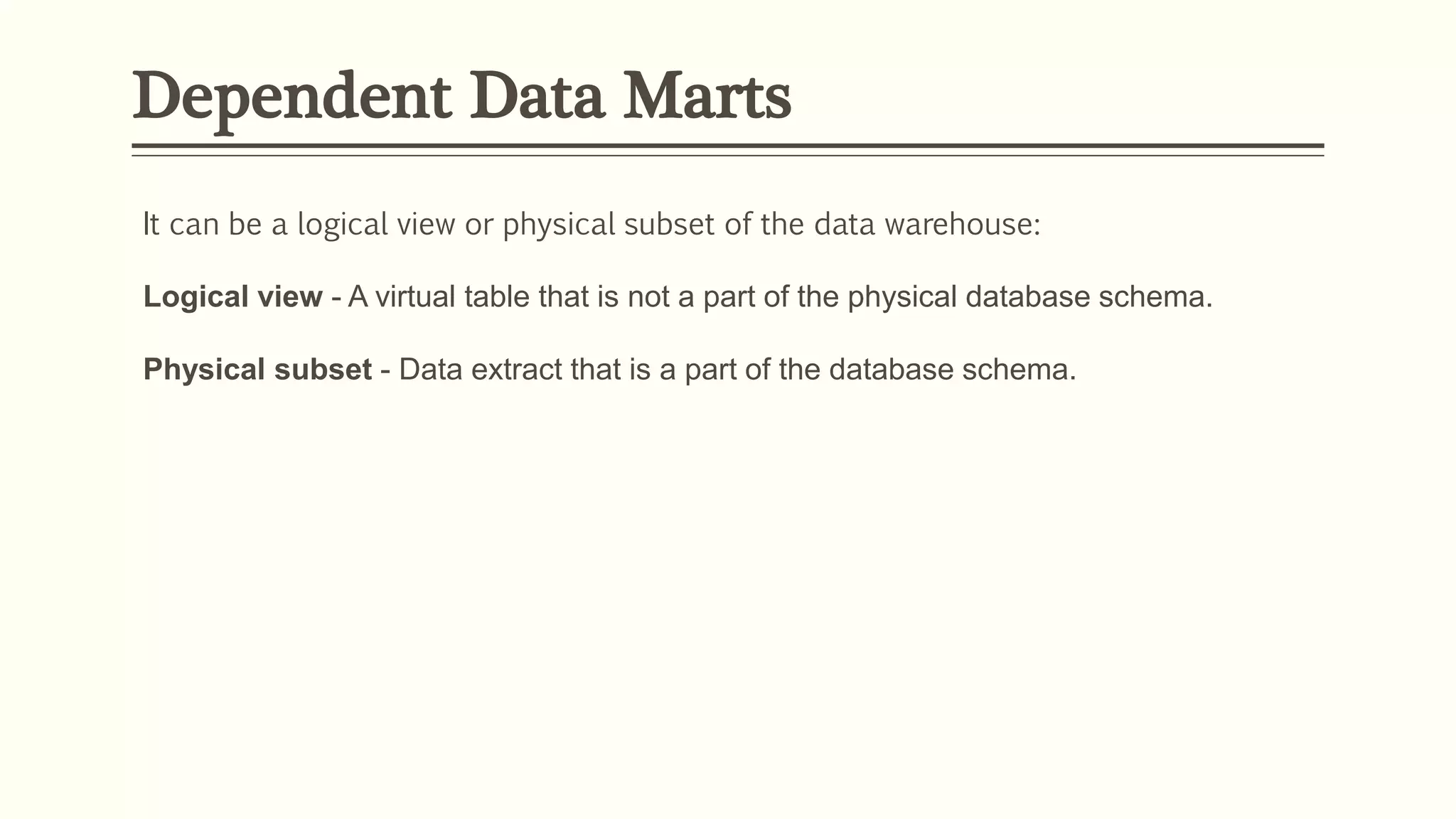
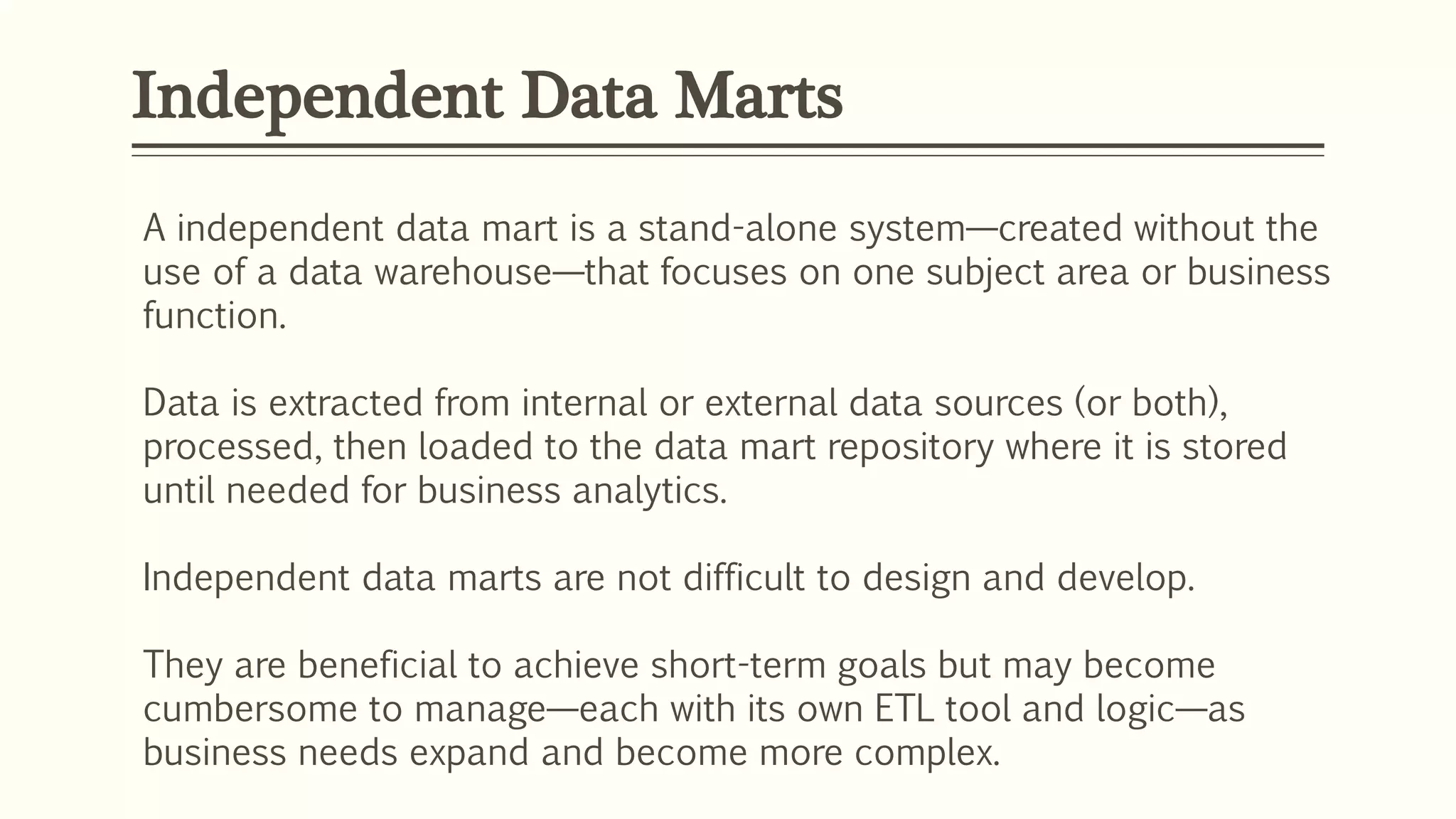
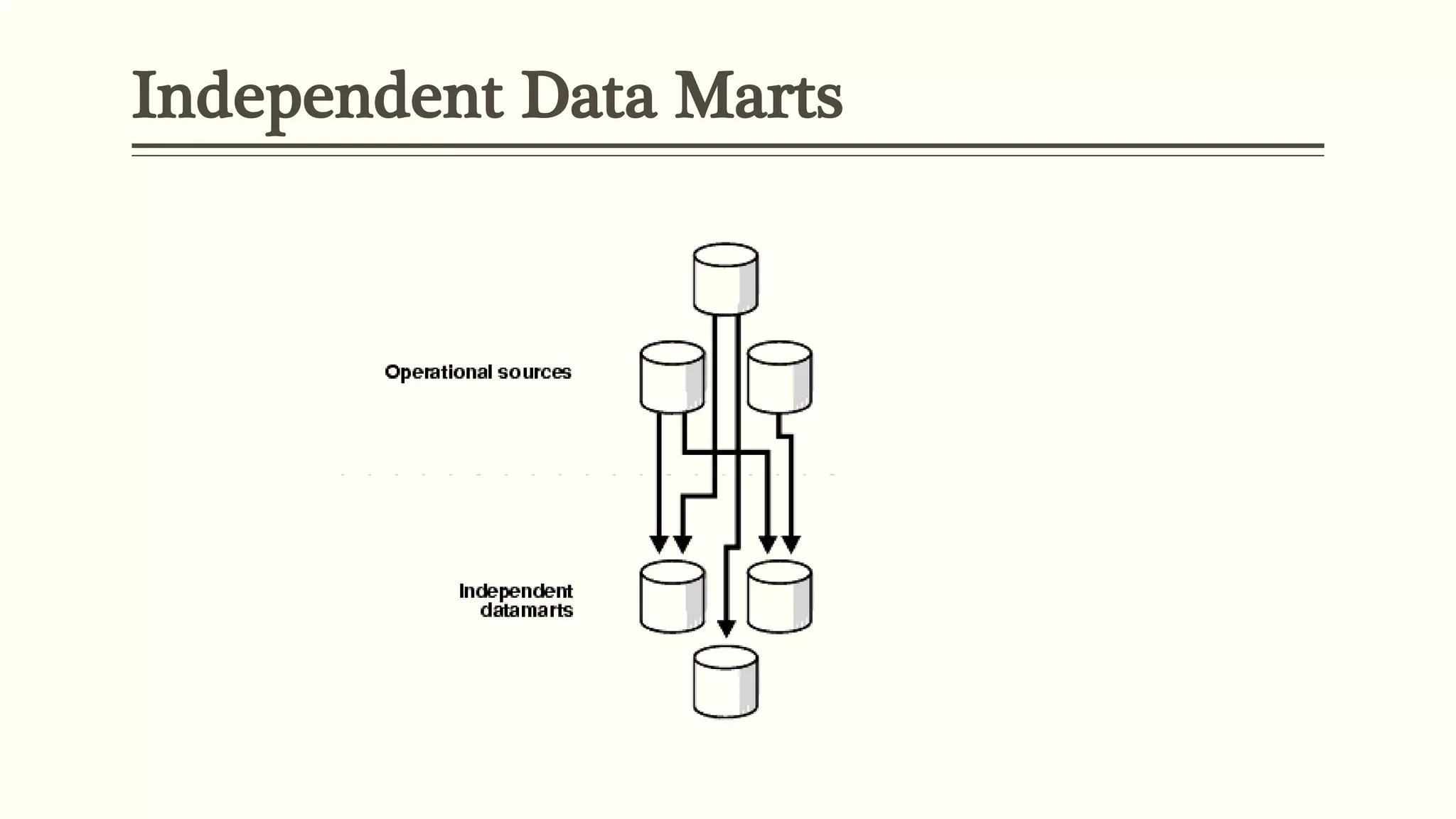
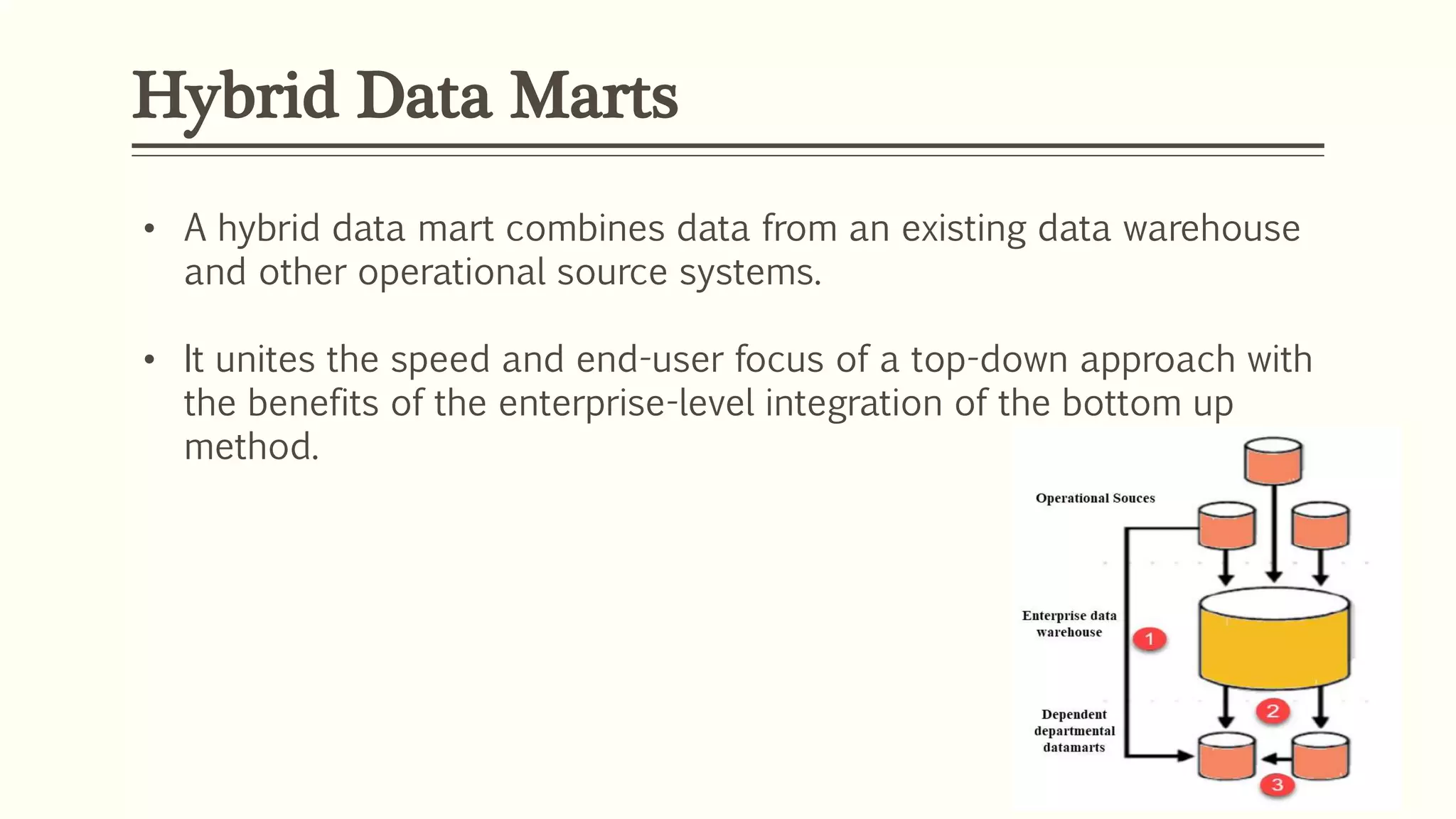
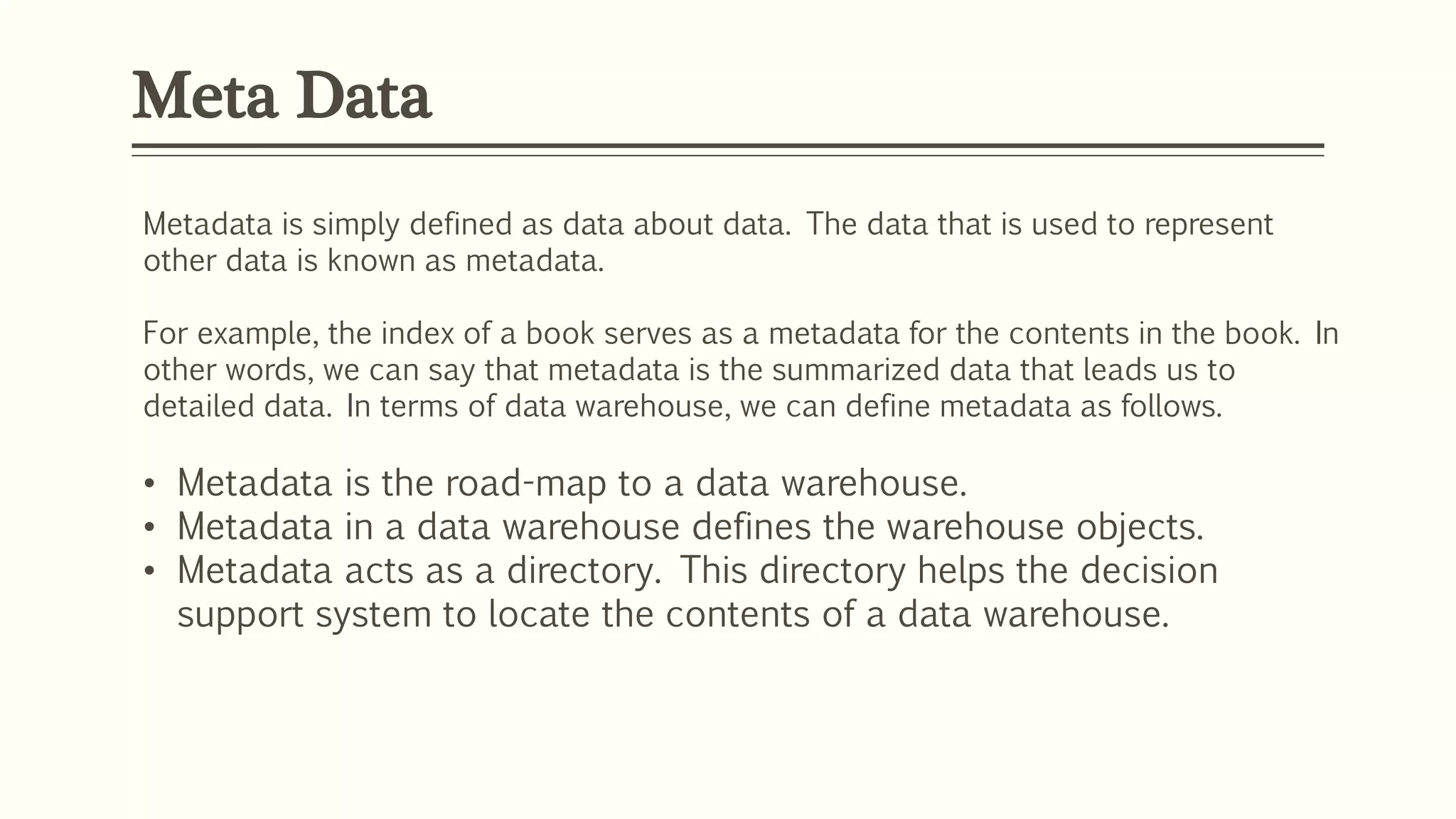
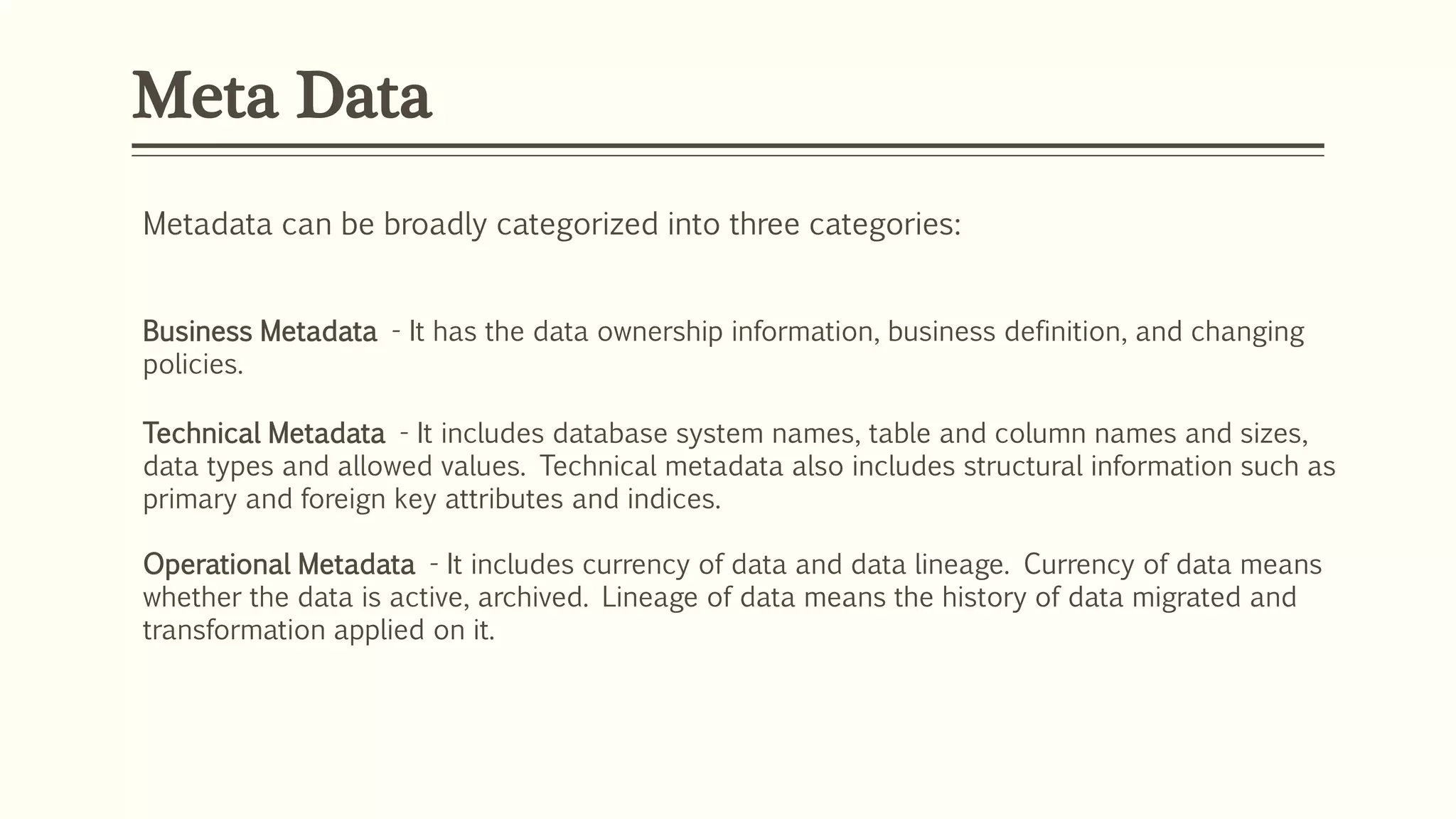
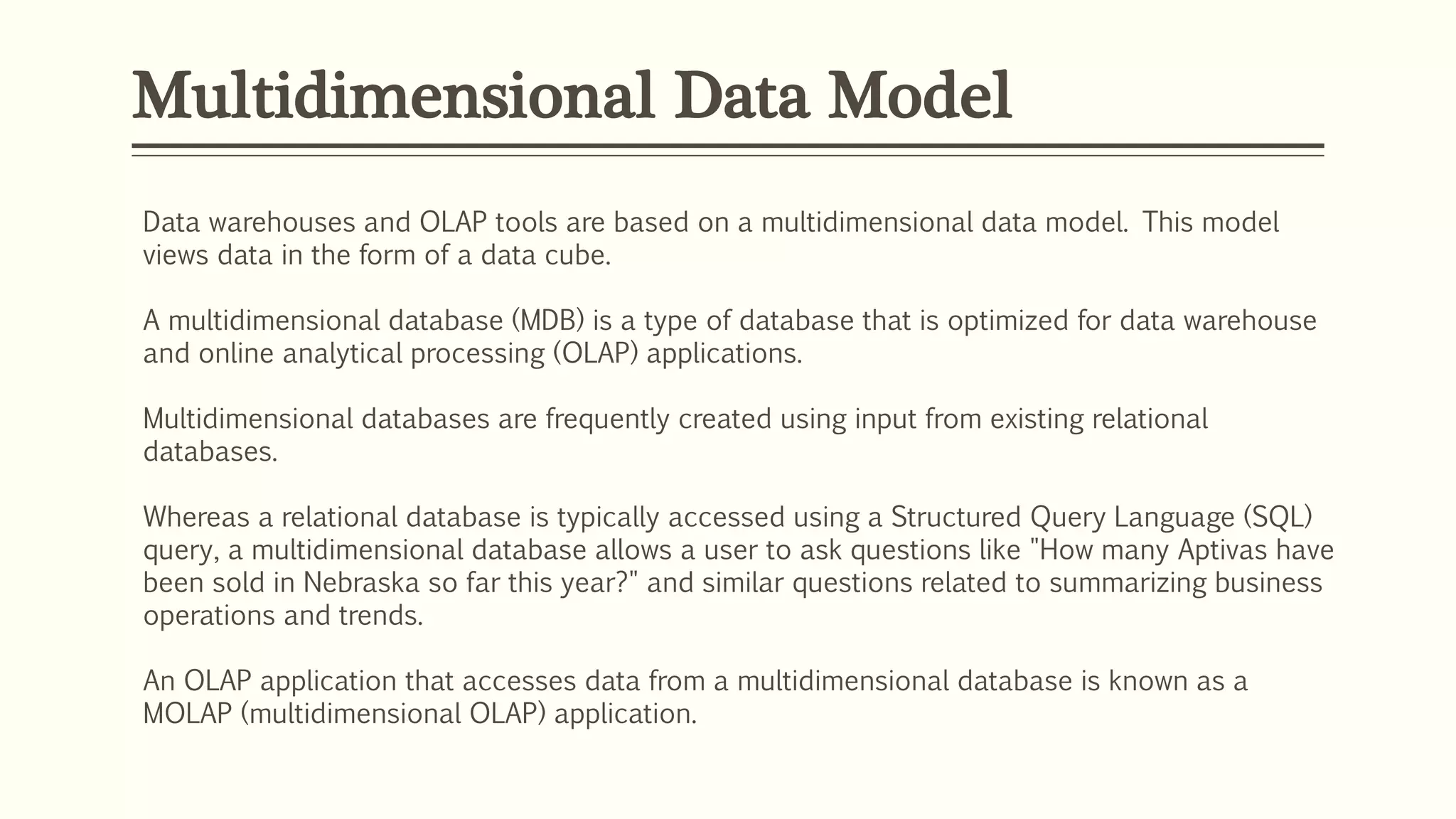
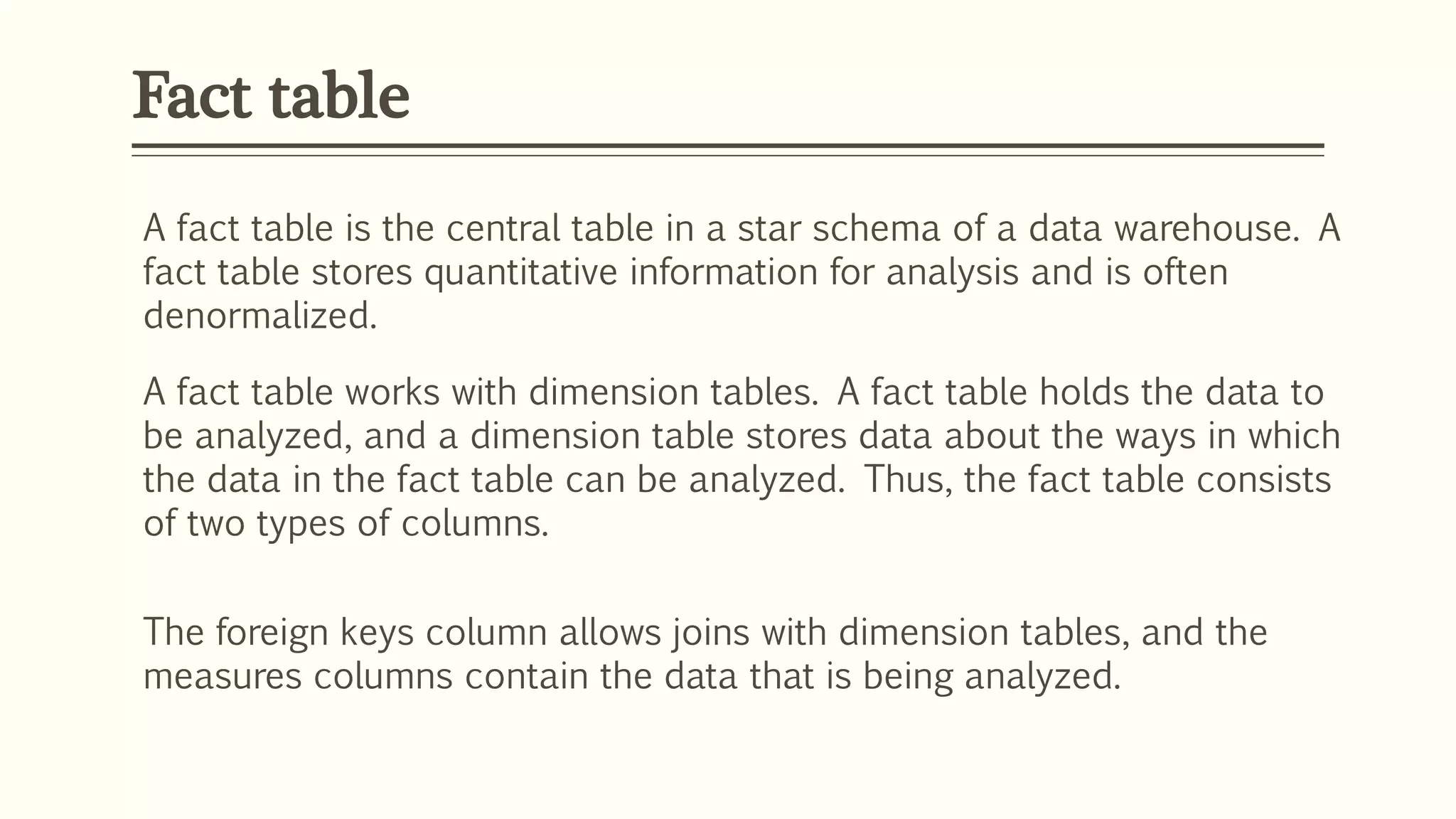
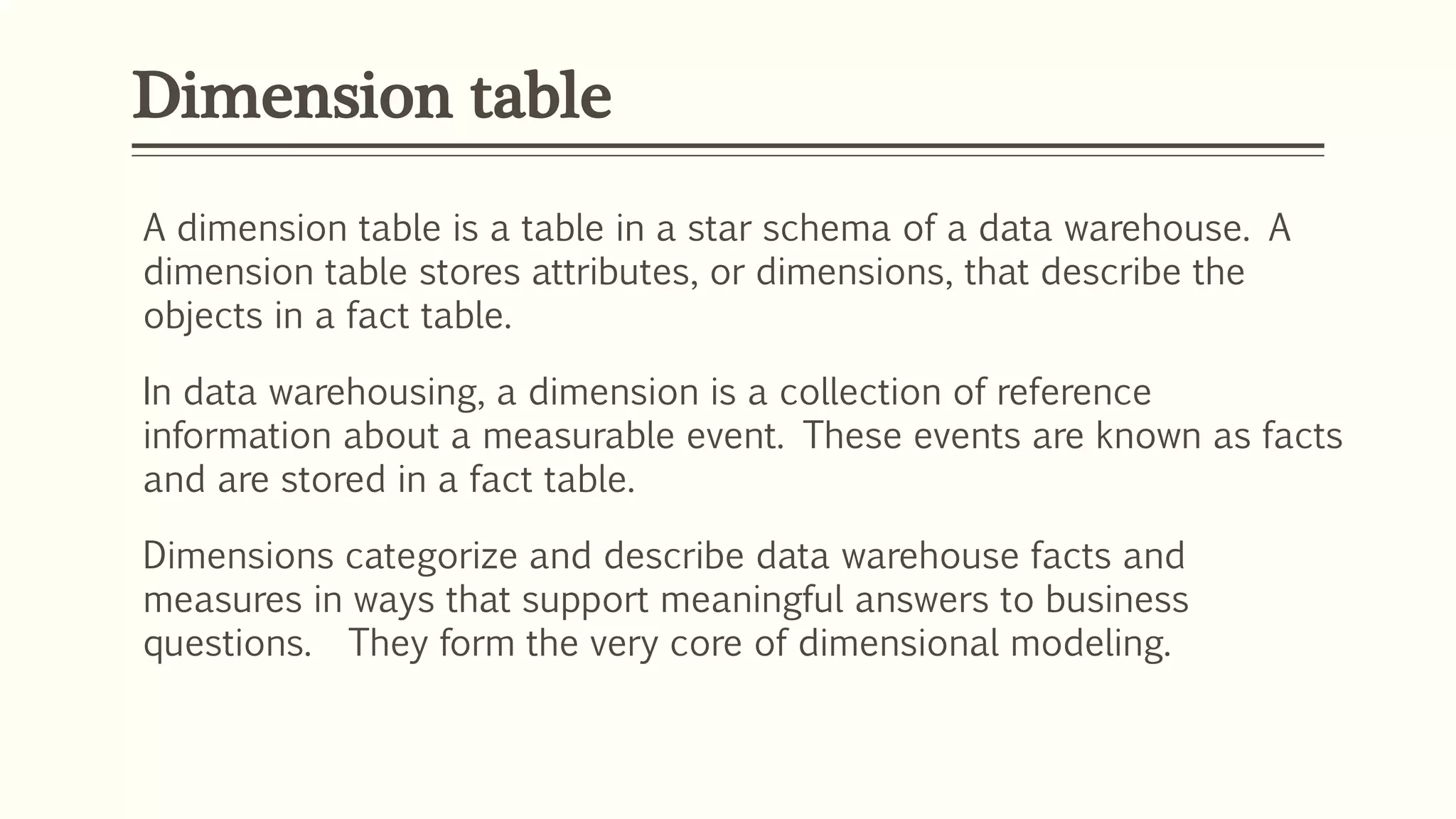
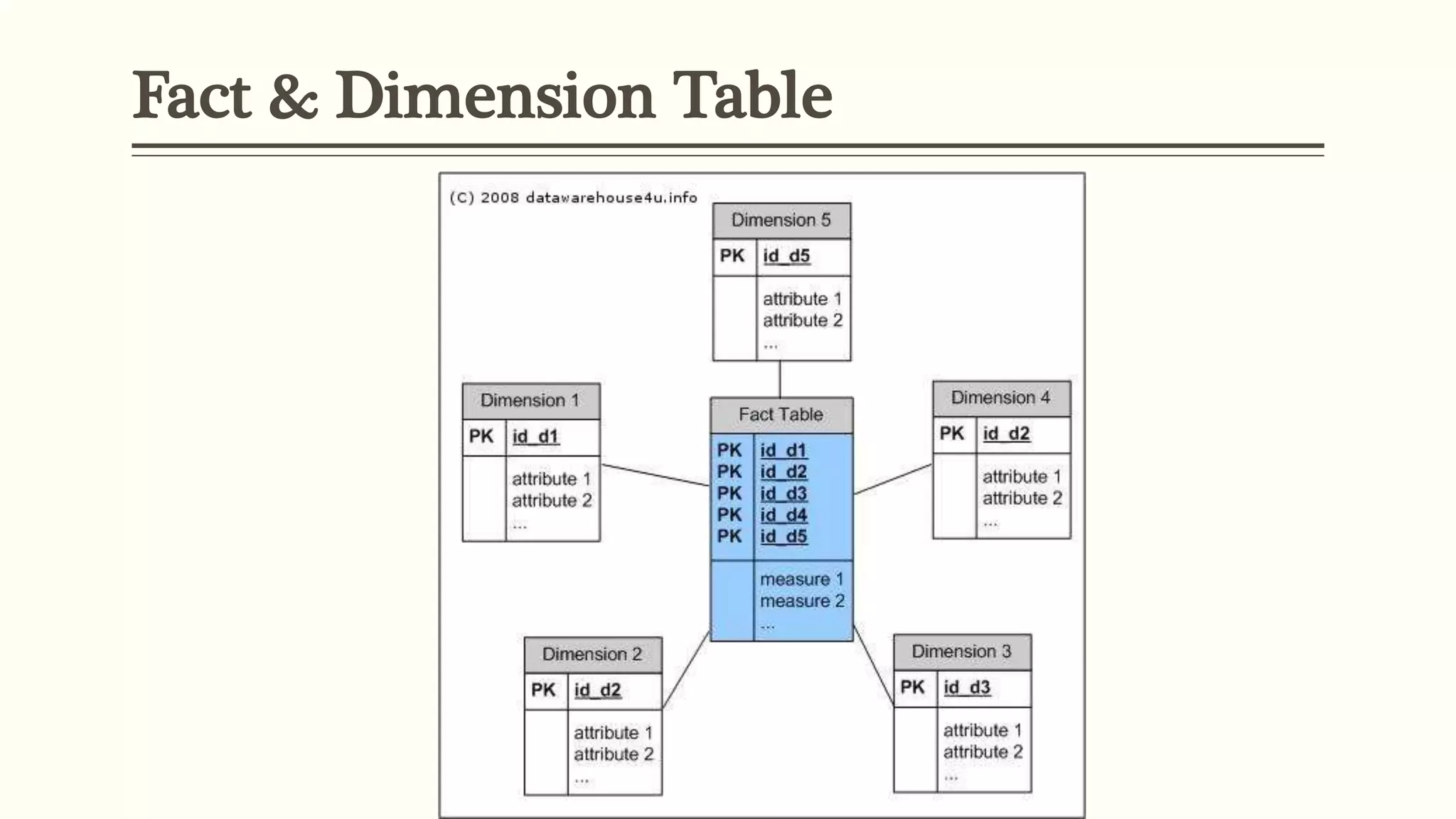
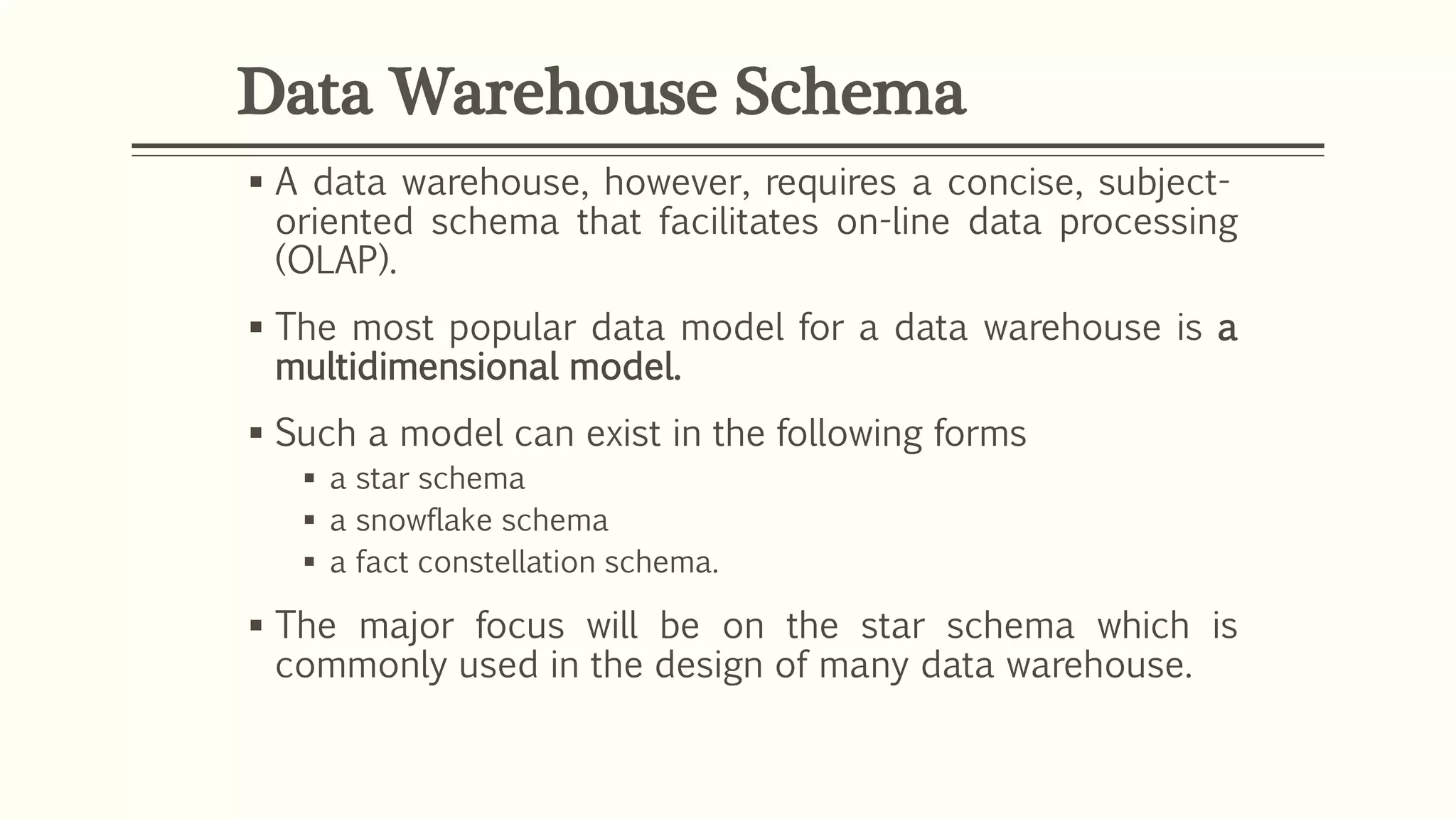
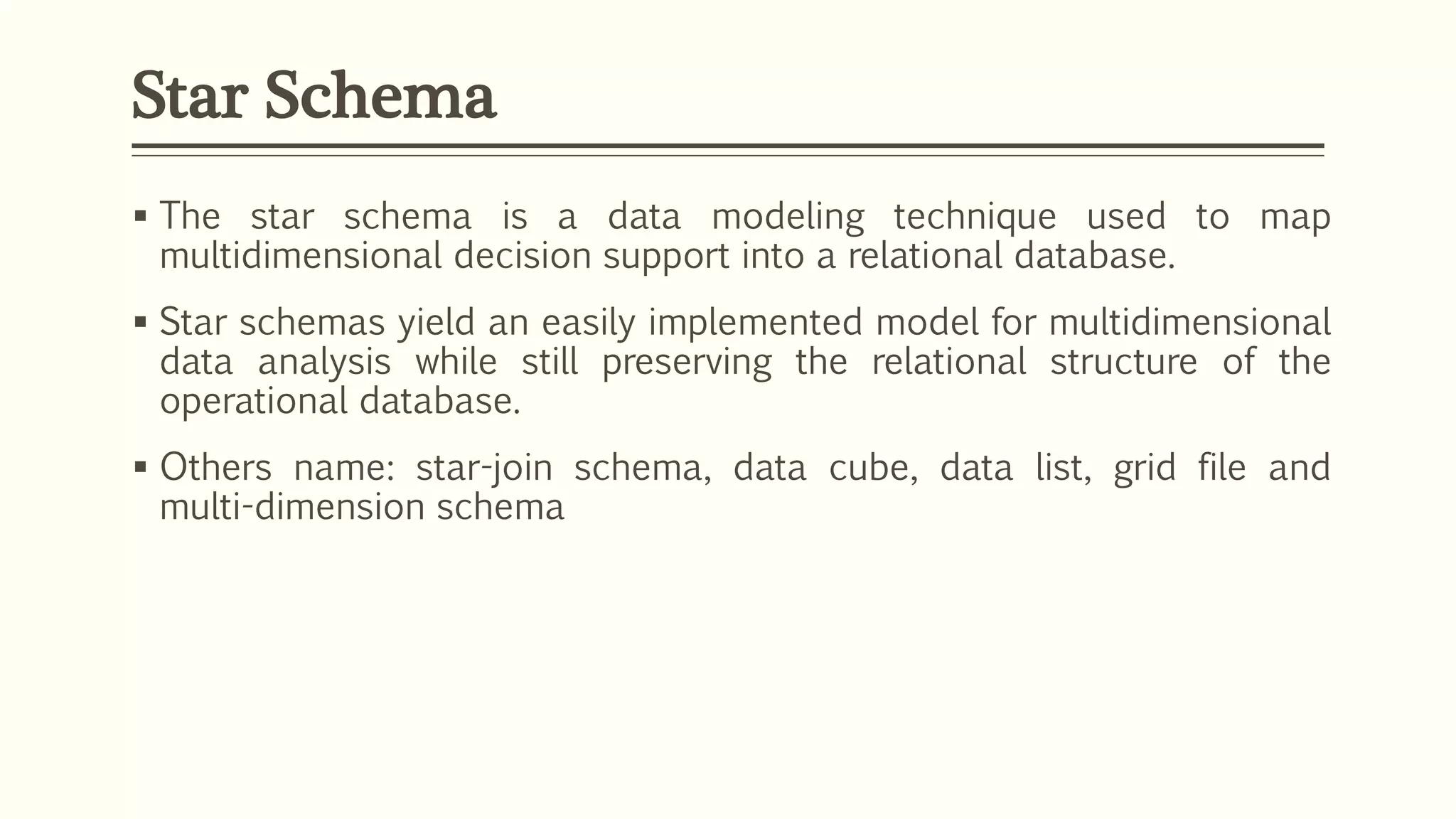
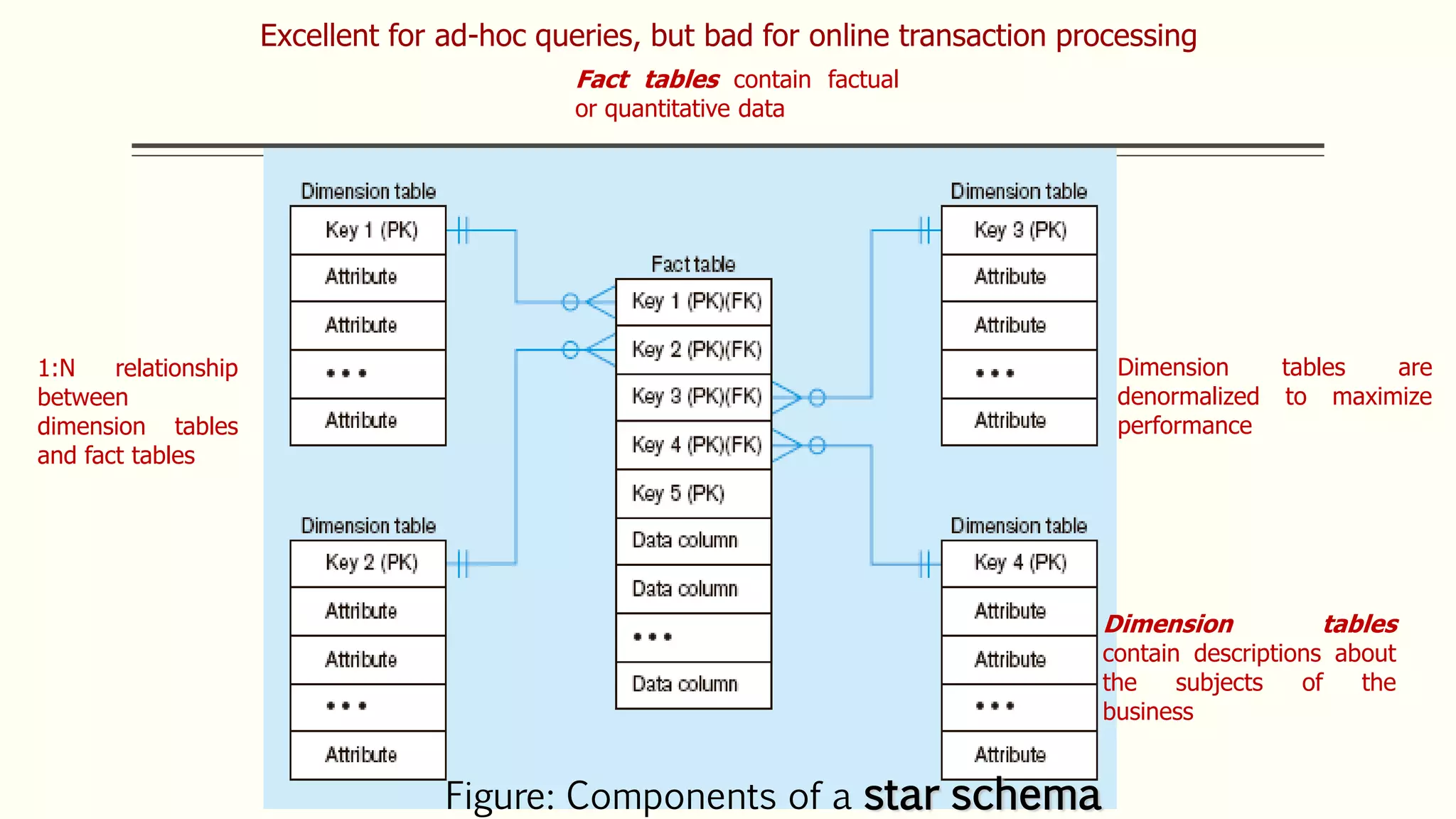
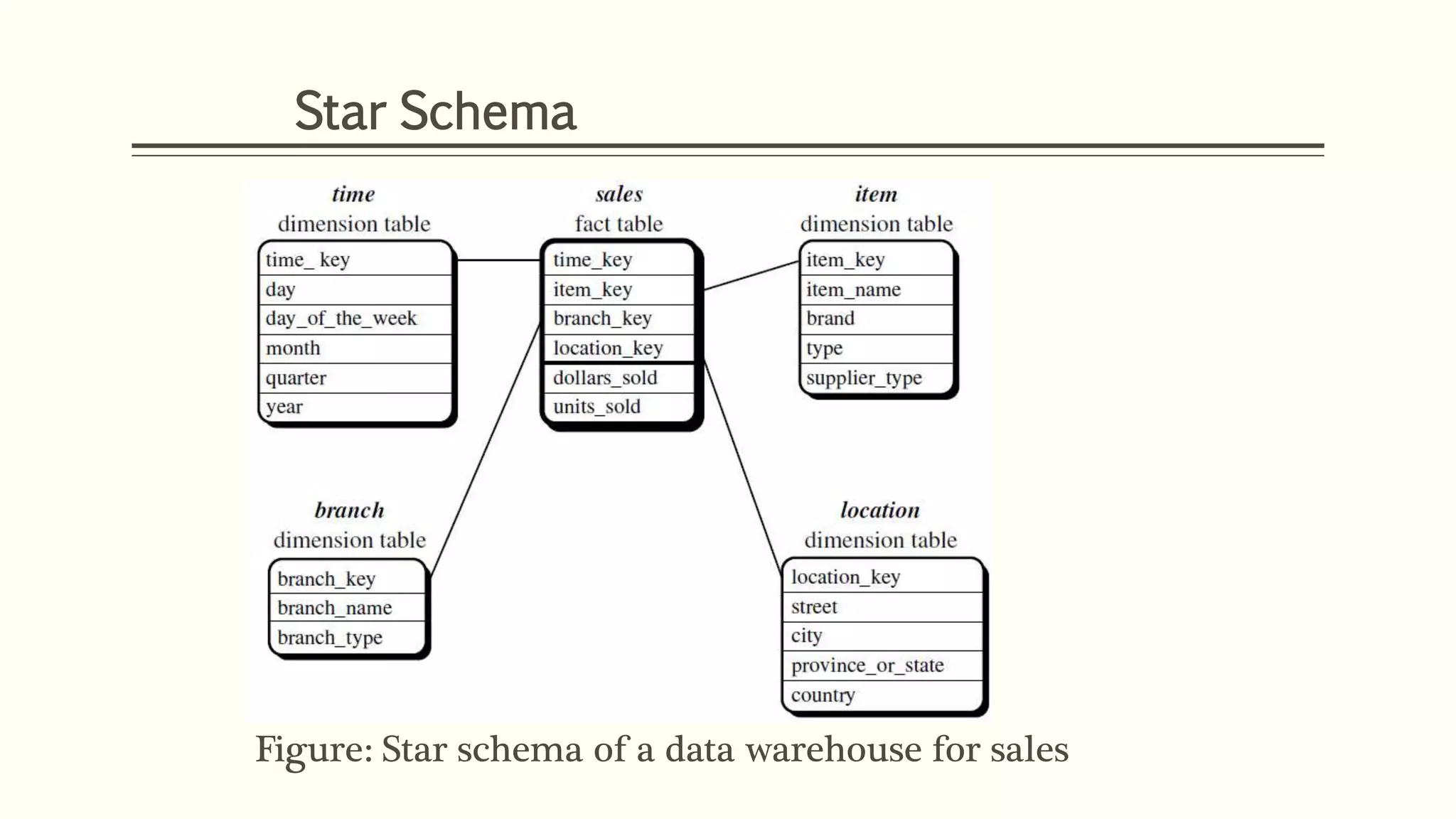
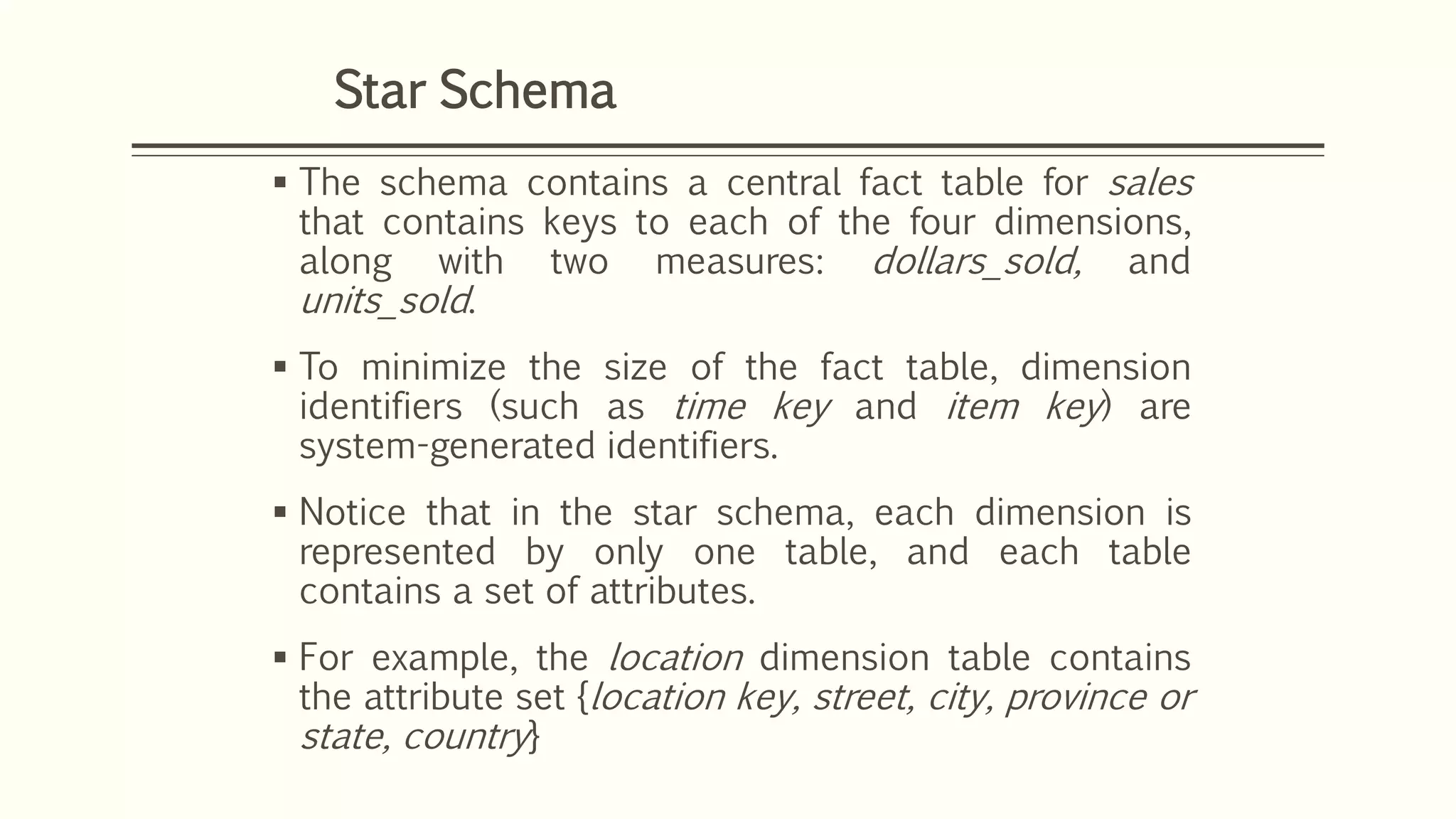
![Defining a Star Schema in DMQL
define cube sales_star [time, item, branch, location]:
dollars_sold = sum(sales_in_dollars), avg_sales =
avg(sales_in_dollars), units_sold = count(*)
define dimension time as (time_key, day, day_of_week,
month, quarter, year)
define dimension item as (item_key, item_name, brand,
type, supplier_type)
define dimension branch as (branch_key, branch_name,
branch_type)
define dimension location as (location_key, street, city,
province_or_state, country)](https://image.slidesharecdn.com/datawarehouselogicaldesign-chapter2-190608034533/75/Data-warehouse-logical-design-20-2048.jpg)
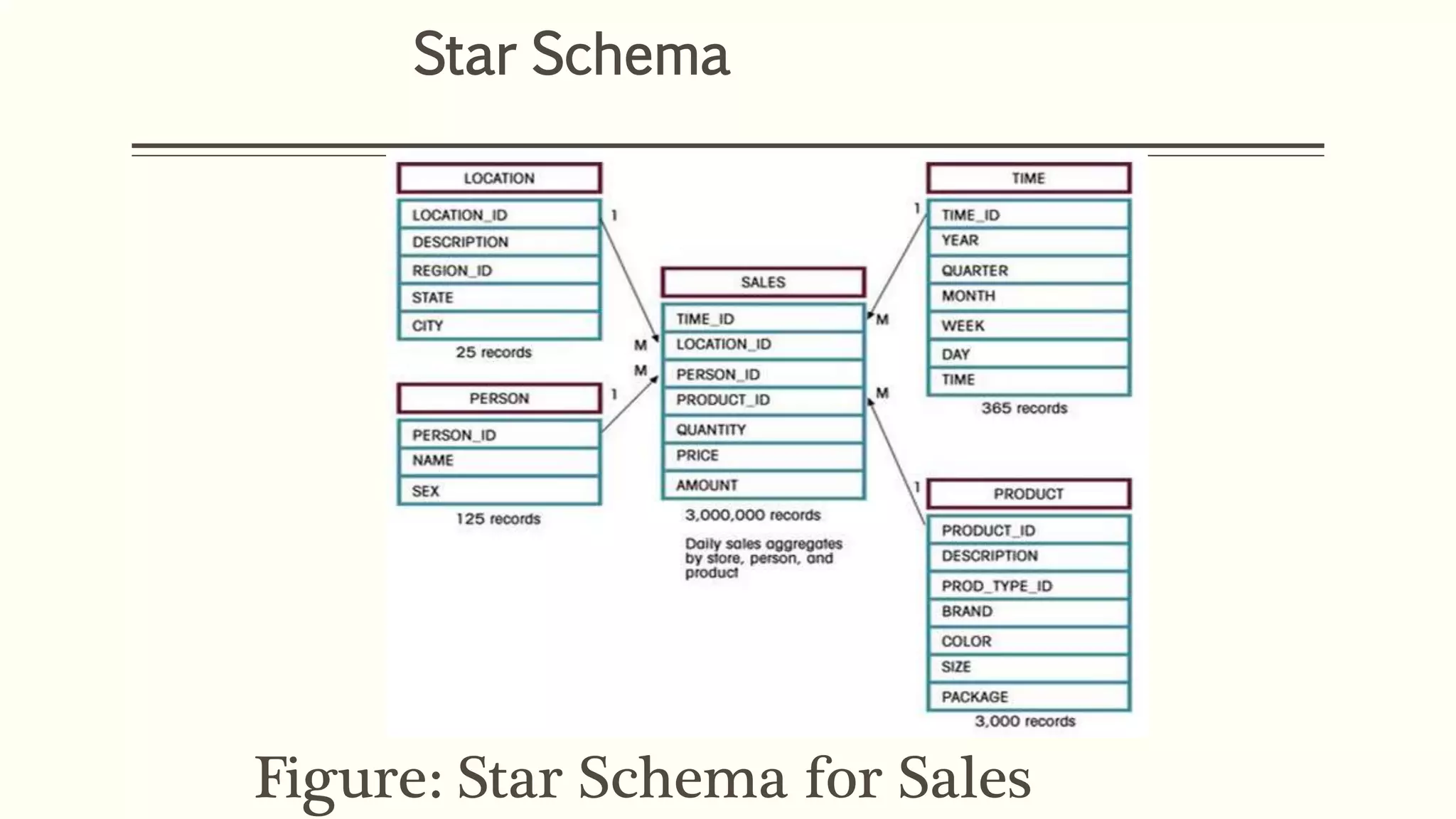
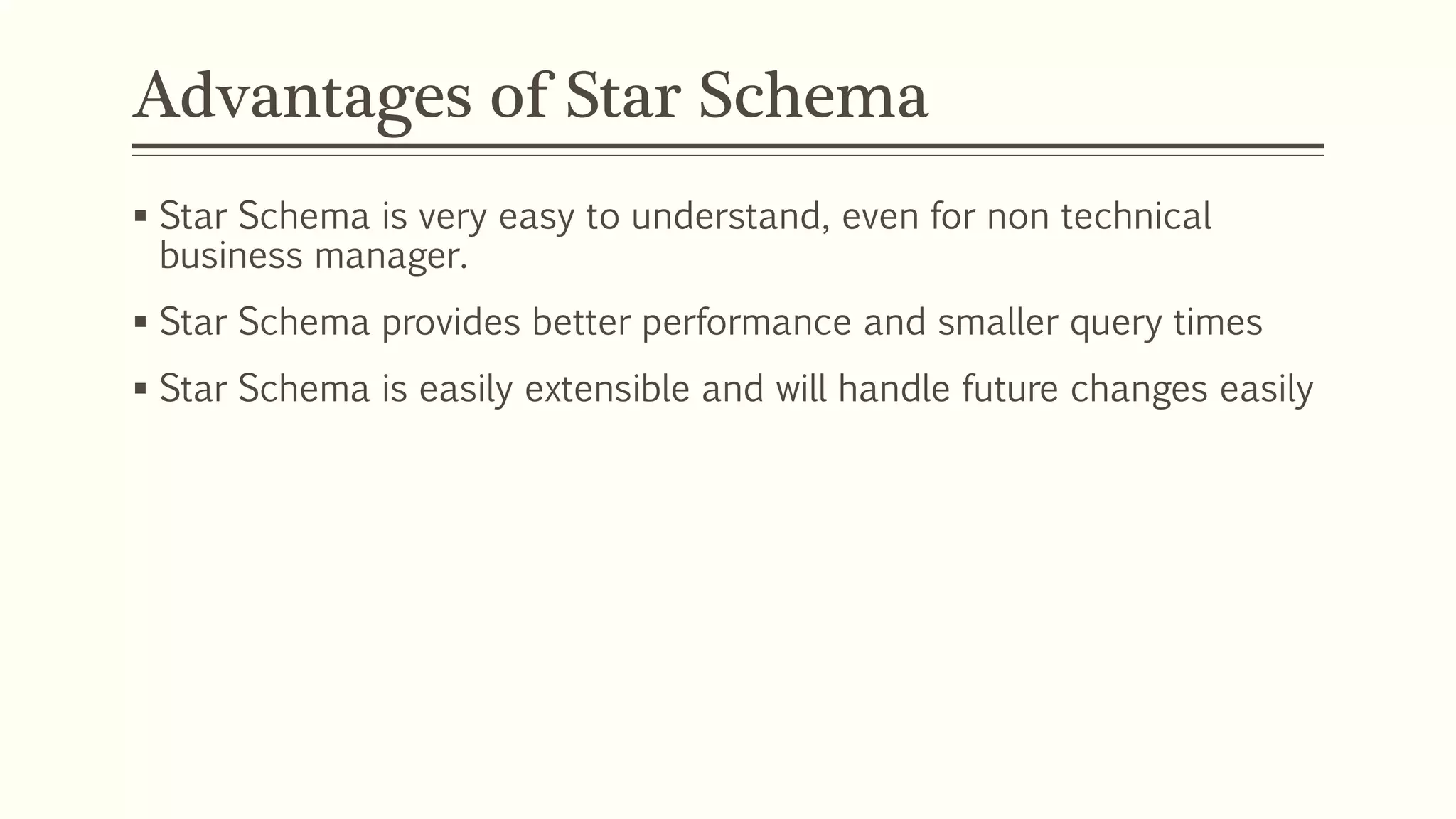
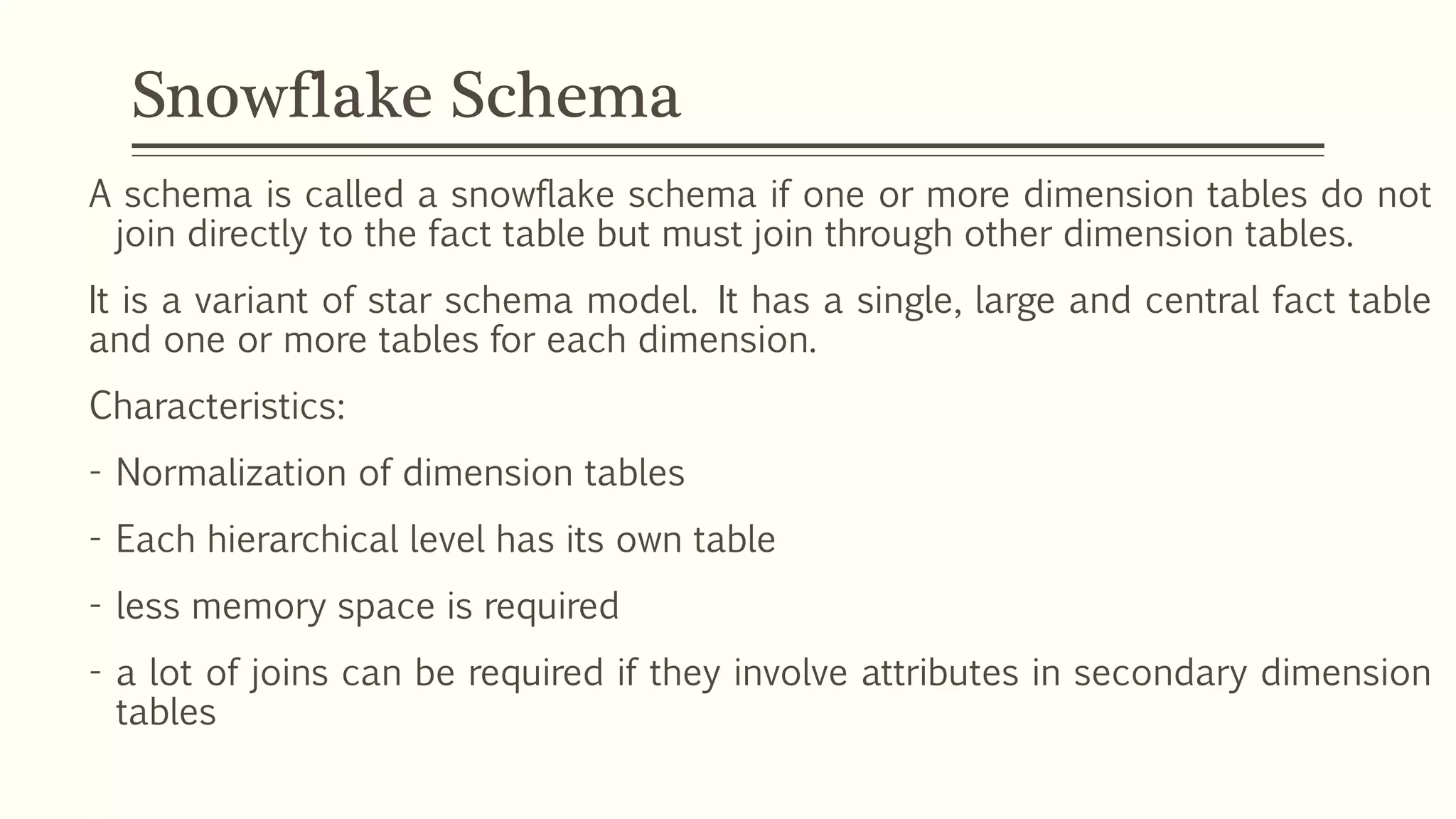
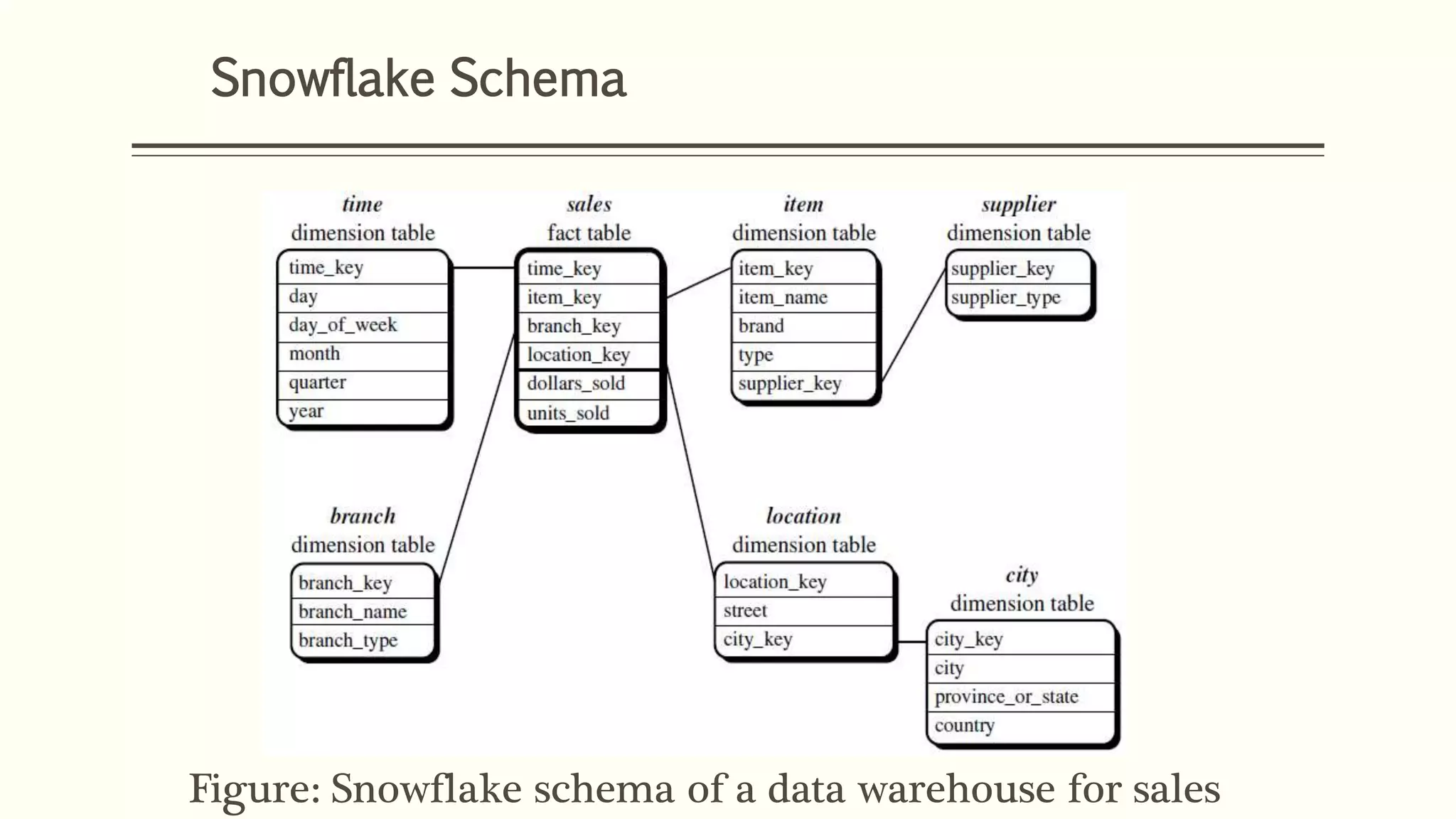
![Defining a Snowflake Schema in
DMQL
define cube sales_snowflake [time, item, branch, location]:
dollars_sold = sum(sales_in_dollars), avg_sales =
avg(sales_in_dollars), units_sold = count(*)
define dimension time as (time_key, day, day_of_week,
month, quarter, year)
define dimension item as (item_key, item_name, brand,
type, supplier(supplier_key, supplier_type))
define dimension branch as (branch_key, branch_name,
branch_type)
define dimension location as (location_key, street,
city(city_key, province_or_state, country))](https://image.slidesharecdn.com/datawarehouselogicaldesign-chapter2-190608034533/75/Data-warehouse-logical-design-25-2048.jpg)

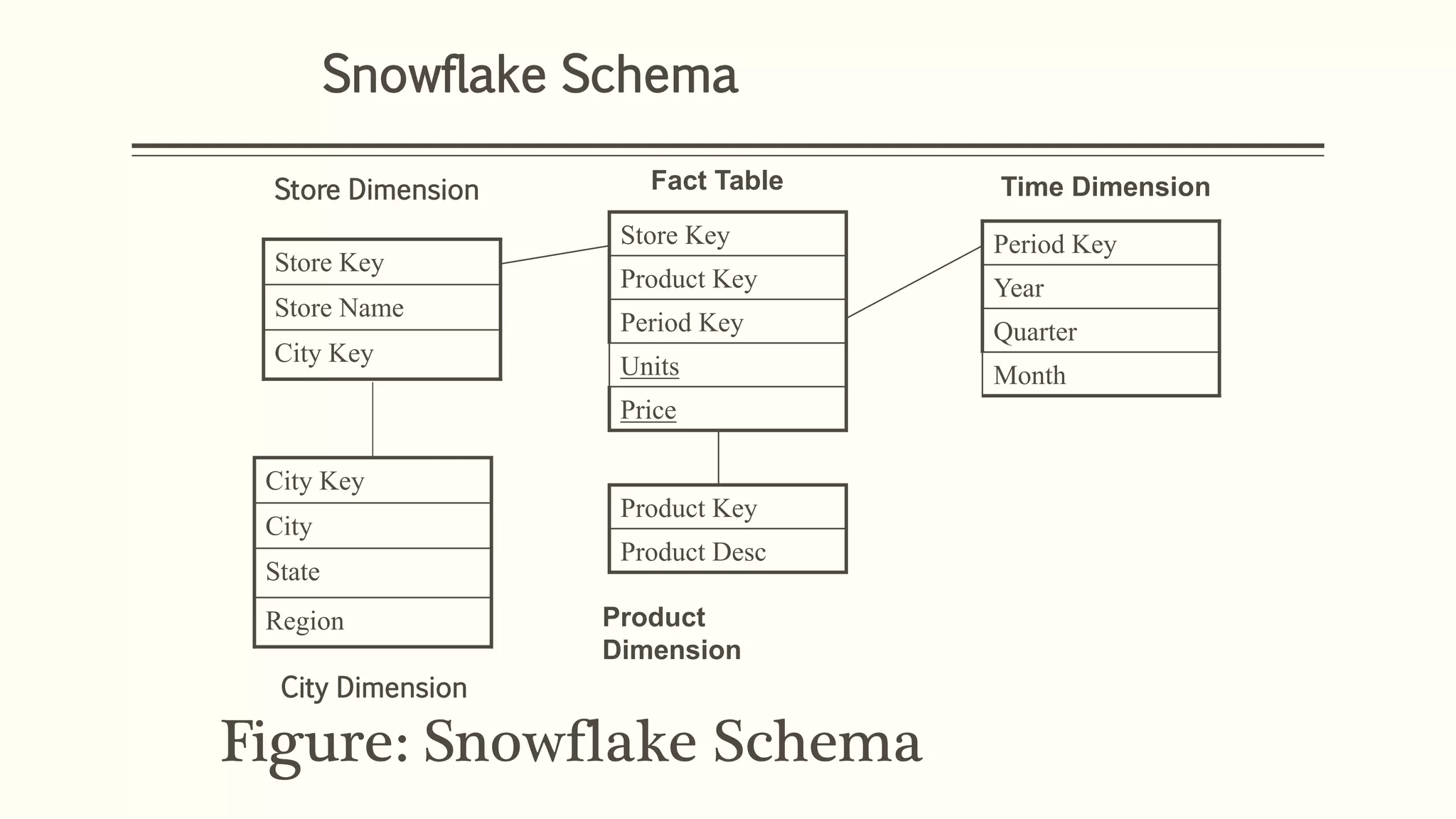
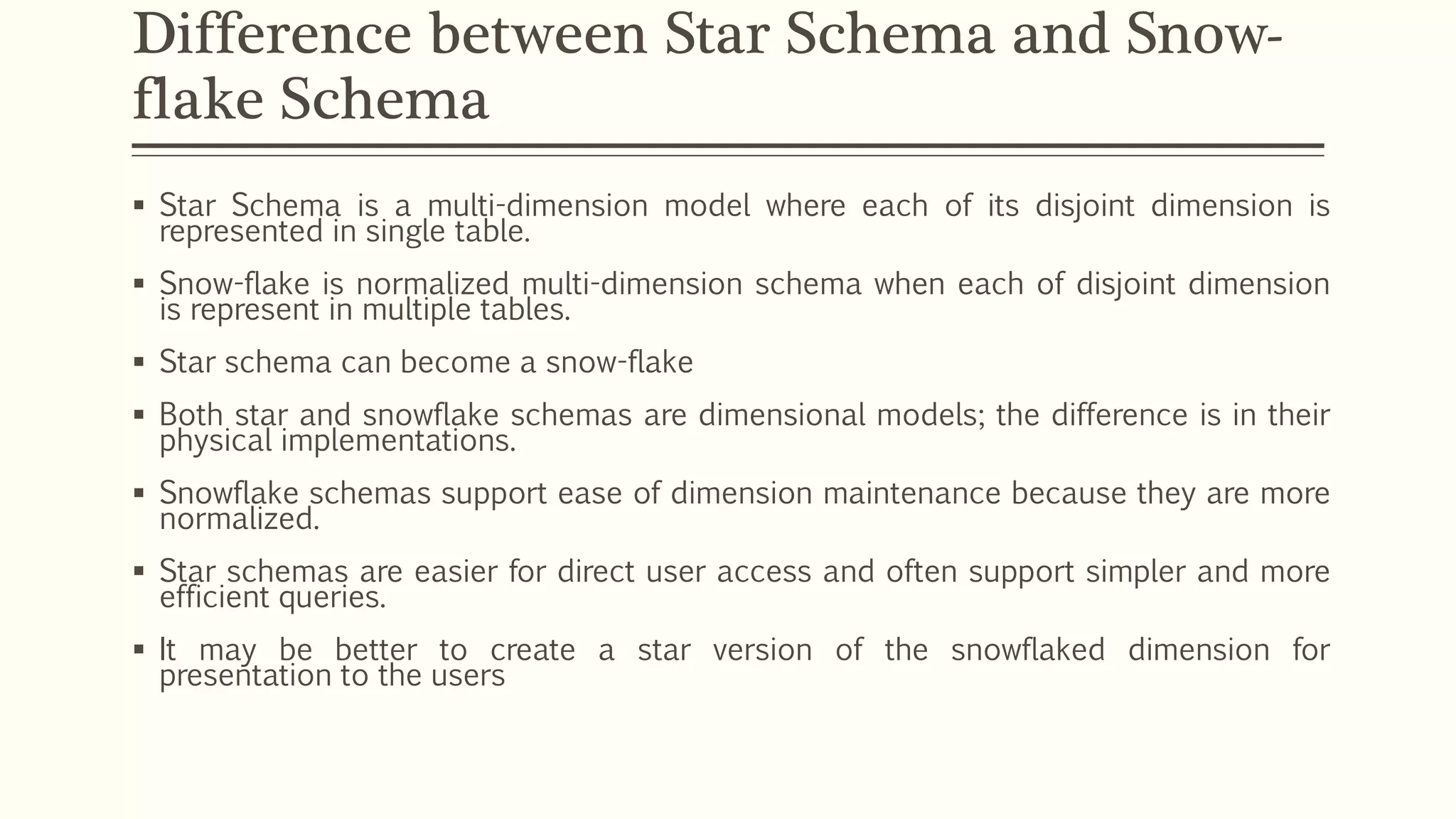
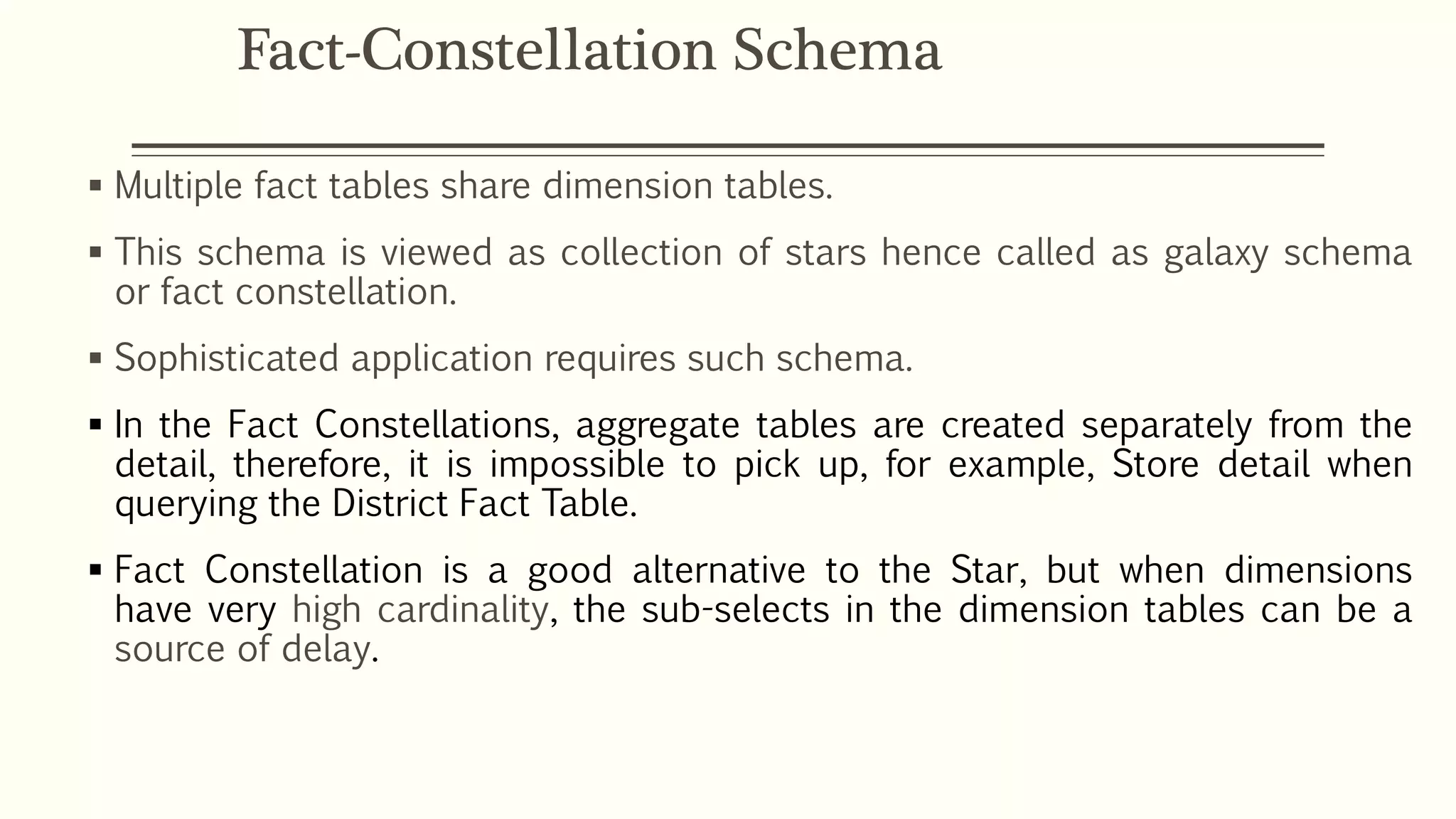

![Defining a Fact Constellation in
DMQL
define cube sales [time, item, branch, location]:
dollars_sold = sum(sales_in_dollars), avg_sales = avg(sales_in_dollars), units_sold =
count(*)
define dimension time as (time_key, day, day_of_week, month, quarter, year)
define dimension item as (item_key, item_name, brand, type, supplier_type)
define dimension branch as (branch_key, branch_name, branch_type)
define dimension location as (location_key, street, city, province_or_state, country)
define cube shipping [time, item, shipper, from_location, to_location]:
dollar_cost = sum(cost_in_dollars), unit_shipped = count(*)
define dimension time as time in cube sales
define dimension item as item in cube sales
define dimension shipper as (shipper_key, shipper_name, location as location in cube sales,
shipper_type)
define dimension from_location as location in cube sales
define dimension to_location as location in cube sales](https://image.slidesharecdn.com/datawarehouselogicaldesign-chapter2-190608034533/75/Data-warehouse-logical-design-31-2048.jpg)
